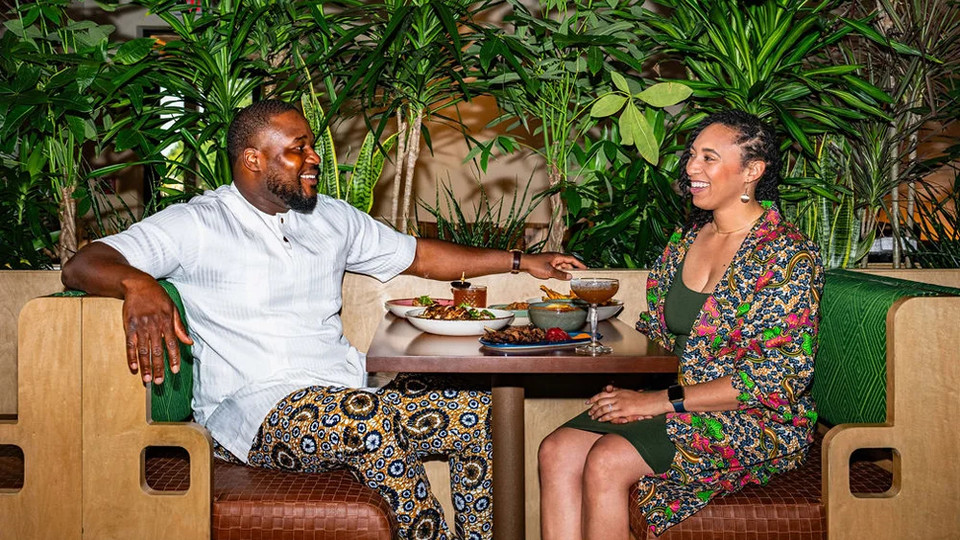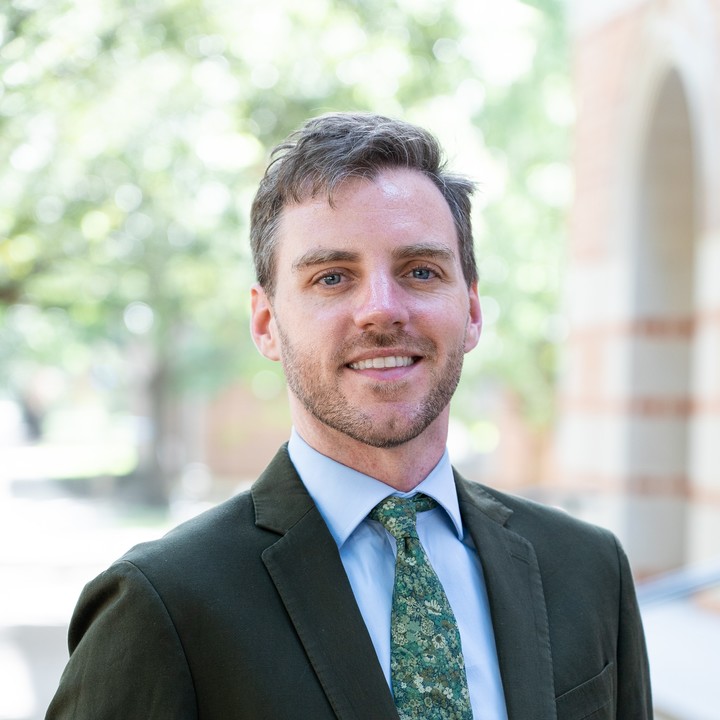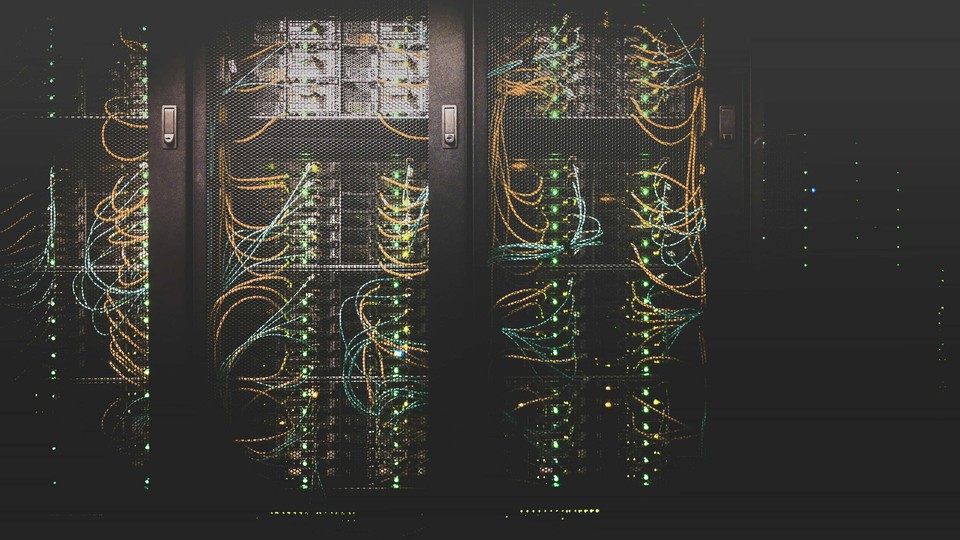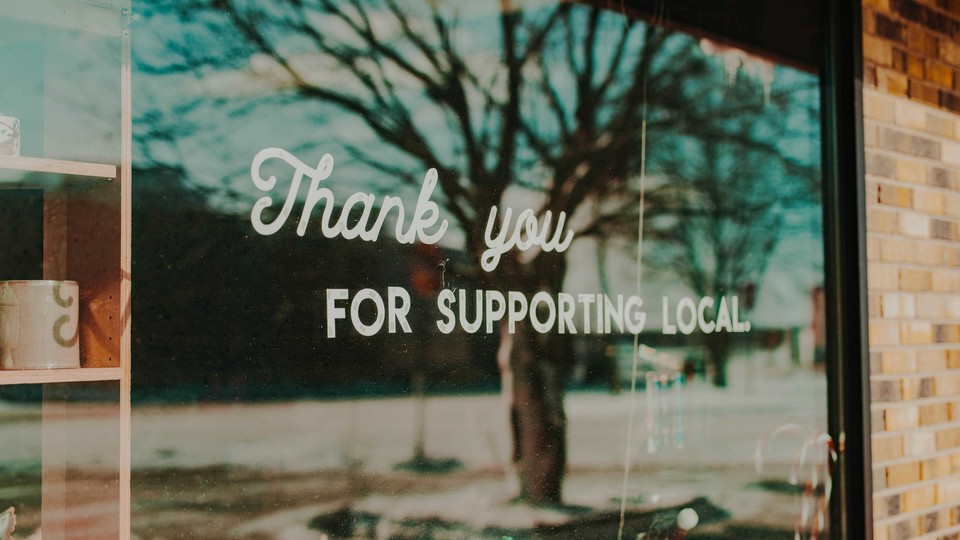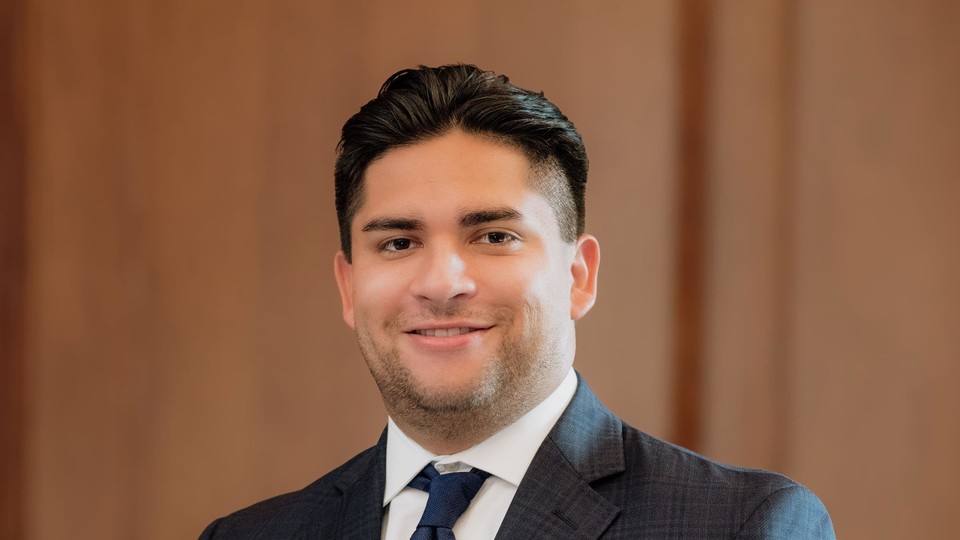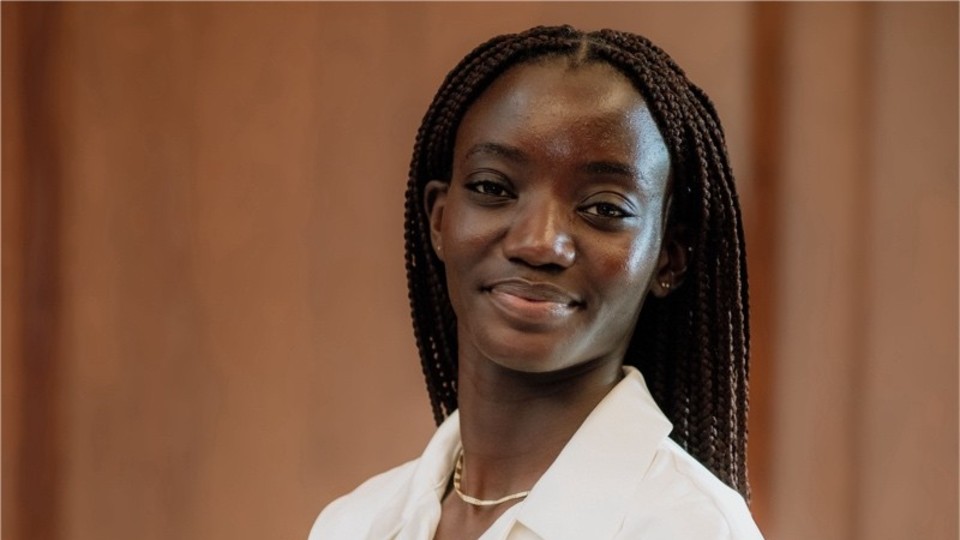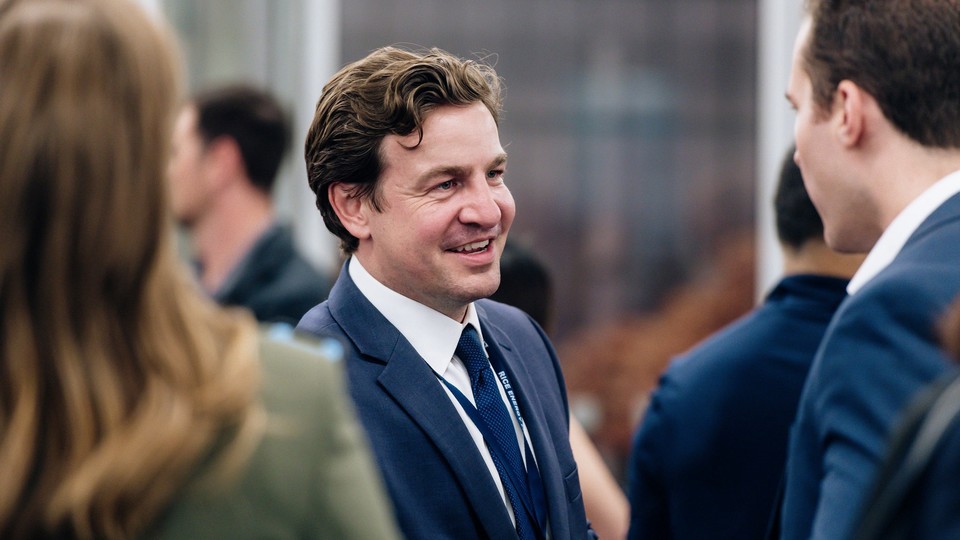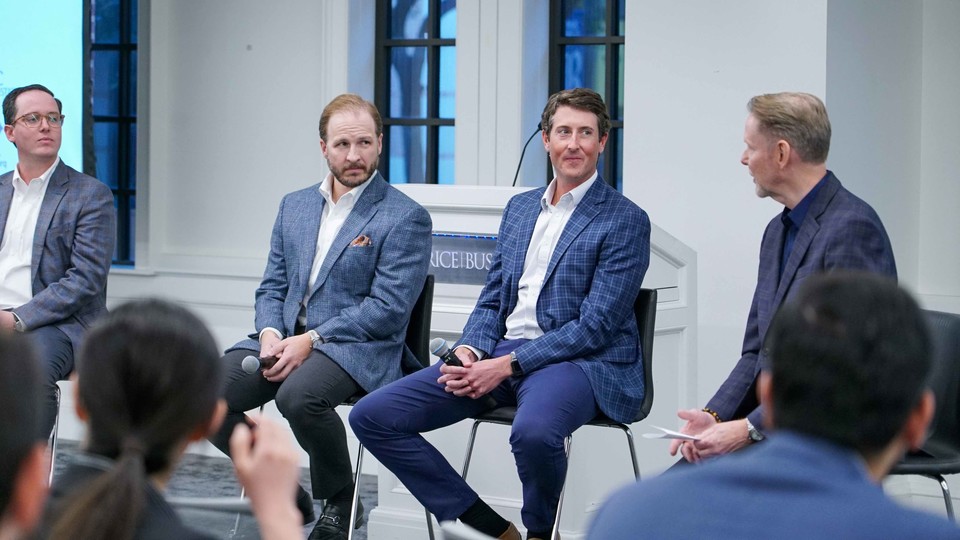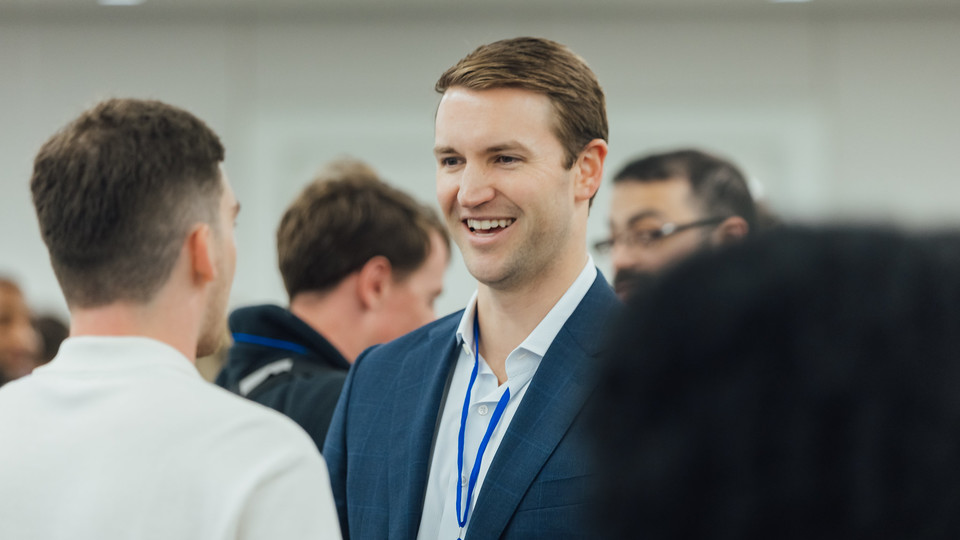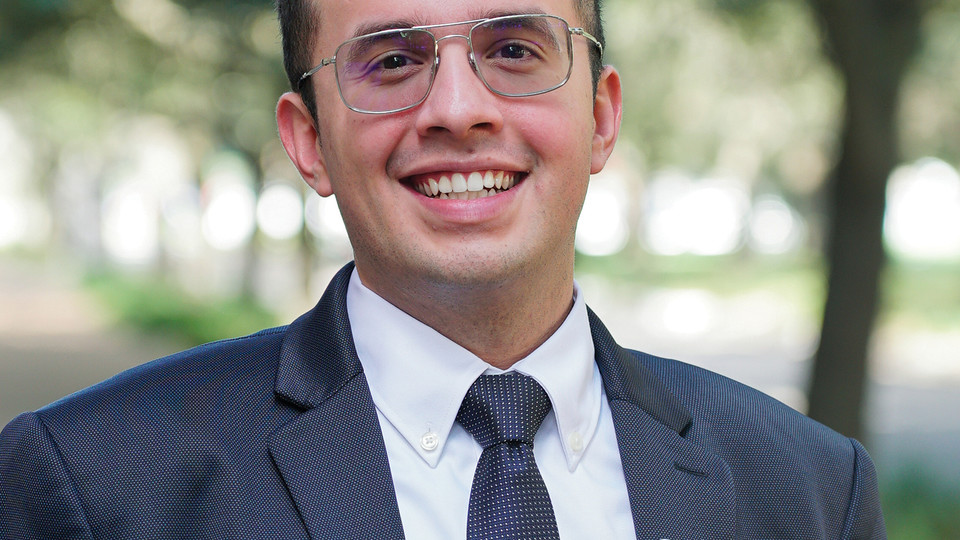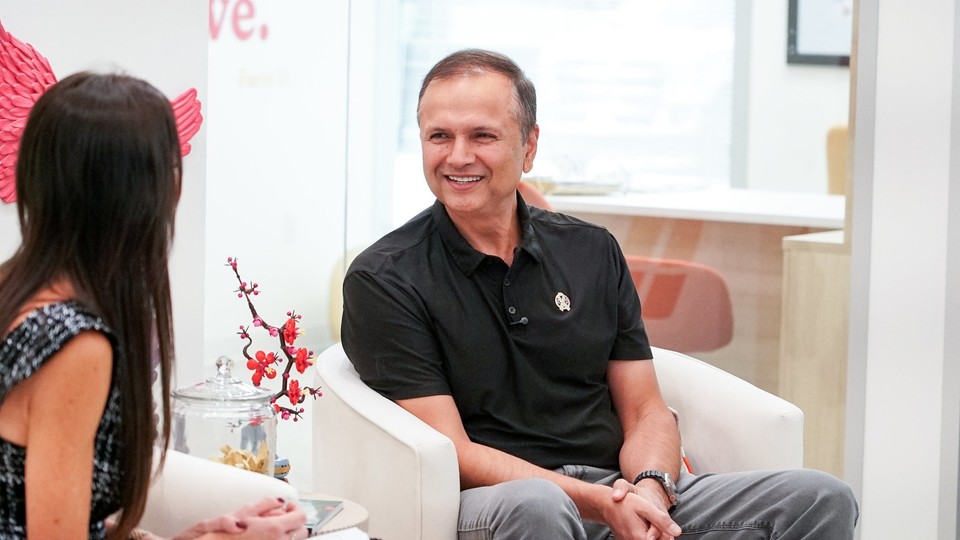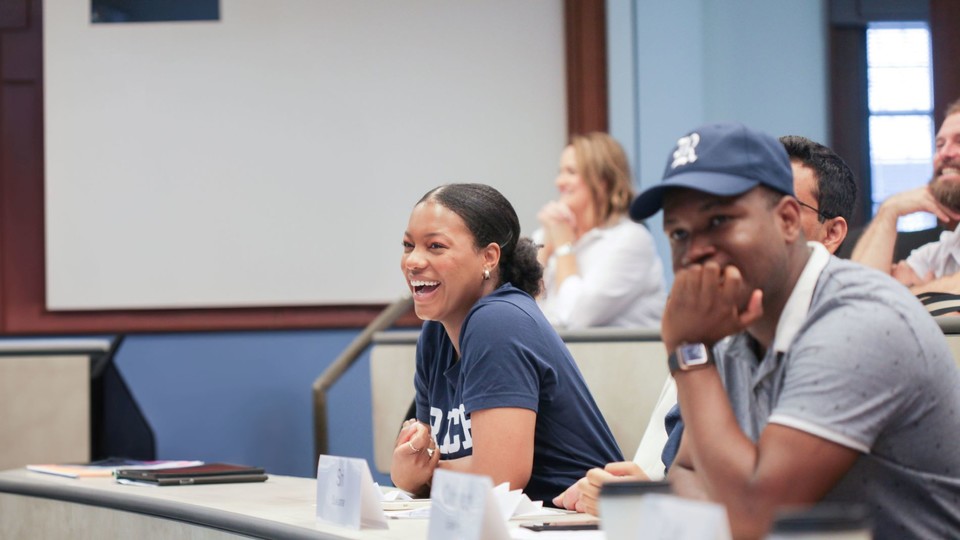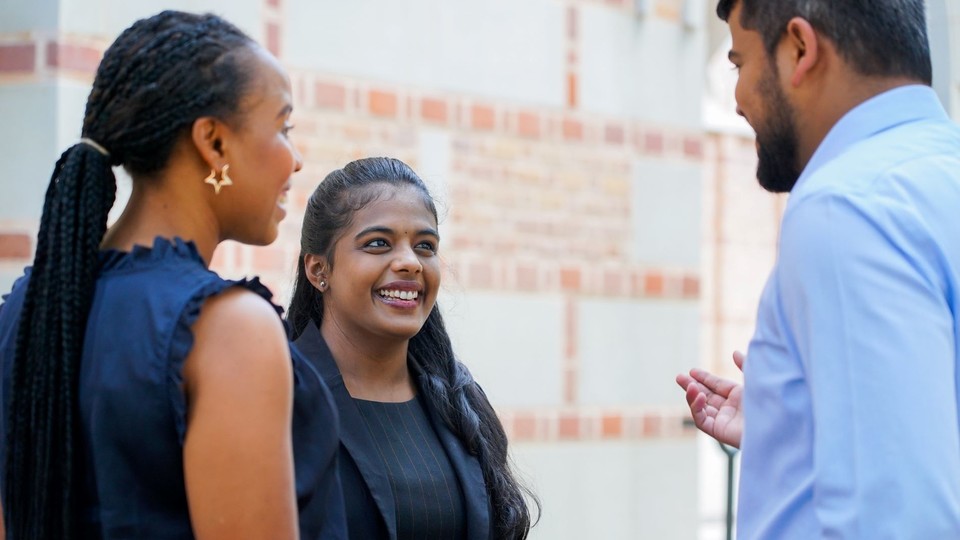The Hidden Forces Behind CEO Pay
Professor John Barry’s research offers a fresh perspective on executive compensation.


When it comes to CEO pay, big numbers tend to grab the headlines. But behind those figures is a more complex story — one that’s less about executives jumping ship for better offers and more about the firm-specific knowledge they develop over time.
In this Q&A, assistant professor of finance John Barry explains how his research reshapes the way we think about executive compensation.
Tell us about your latest research on CEO compensation.
John Barry: Our paper looks at what really drives CEO pay and mobility. An accepted academic explanation has been that CEOs earn more because they have general skills that make them valuable to any company — and in a competitive market, firms have to pay big to attract that talent. But in reality, the CEO job market isn’t so frictionless. Mobility has dropped sharply, and most CEOs are promoted from within a firm rather than hired from the outside.
So, my co-authors and I took a different approach. We looked at the mix of general versus firm-specific skills that CEOs bring to the table. Our model helps explain why CEO pay remains high even when executives rarely switch jobs — as well as why companies are often willing to pay more to keep the CEO they already have.
Can you say more about the differences between “general” and “firm-specific” skills, and how they impact CEO pay?
Barry: General skills are abilities a CEO can use at any company, such as the kind of financial modeling or leadership techniques you might learn in an MBA program. These skills apply broadly across firms, which is why they tend to boost a CEO’s value on the job market.
By contrast, firm-specific skills are tied to a particular company. Think of a CEO who knows how to navigate the company’s unique internal dynamics. Abilities like that are hard to transfer, which makes it a priority to keep the current CEO.
Our research helps explain how CEO pay can stay high even when executives rarely move between firms. Traditional explanations focus on outside job offers driving up pay. But we show that firms are often willing to pay a premium to keep CEOs with deep, firm-specific skills because those skills are hard to replace.
How does your paper measure general vs. firm-specific skills? And how do these different skill types affect CEO compensation?
Barry: We focused on how much of a CEO’s skillset is general — meaning, useful across companies — versus firm-specific. And we found that firm-specific skills play a much bigger role in determining CEO pay than previously thought. These skills can be hard to transfer, but they’re incredibly valuable to the firm.
For example, CEO leadership might be uniquely suited to strengthen the company culture. Companies are willing to pay a premium to keep CEOs whose knowledge and leadership are deeply embedded in their operations. These skills also make CEOs less likely to switch jobs, since they’re most effective where they already are.
Is it a bad thing that firm-specific skills reduce CEO mobility?
Barry: Firm-specific skills make a CEO especially valuable to their current employer, giving companies a strong incentive to match outside offers. As a consequence, it becomes less common for CEOs to switch jobs. So, reduced mobility is not necessarily a bad thing for executives; in fact, it can work in their favor. Because companies often don’t want to lose firm-specific expertise, they’re often willing to raise compensation to keep the CEO in place.
To use a nonmanagerial example: Think of a software engineer who built a company’s core platform. When a competitor tries to poach her, her current team would likely be willing to offer her a raise rather than risk losing all that critical knowledge. The same logic applies at the top.
There’s been a lot of public discussion about the growth of CEO pay. How does your research fit into that conversation?
Barry: Our research sheds light on why CEO pay can remain high even when executives rarely move between firms. Traditional explanations emphasize outside job offers driving up compensation. But we find that companies are often willing to pay a premium to keep CEOs whose firm-specific skills are difficult to replace.
Our paper doesn’t weigh in on whether pay levels are appropriate, but it does underline an important piece of the puzzle. The embedded skills of a CEO — and the costs of potentially replacing them — play a significant role in shaping compensation.
If readers take one idea from your paper, what should it be?
Barry: Companies and CEOs have a mutual investment in one another. Companies value firm-specific skills, of course, but CEOs value them as well. Over time, CEOs develop knowledge and skills that become both difficult to replace and difficult take somewhere else. So, companies have a strong incentive to pay CEOs to retain them, and CEOs are highly motivated to stay.
The question of CEO pay is not just influenced by outside offers or a perceived lack of general talent. It’s about the value of retaining company-specific knowledge in leadership.
Barry, Lyman, and Zhao (2025). “Human Capital, Competition and Mobility in the Managerial Labor Market,” Working paper.
Never Miss A Story
You May Also Like
Keep Exploring
Running Toward New Goals: Meet Rumie Ogunleye
Meet Rumie Ogunleye '27, mom of two, seasoned portfolio manager and Professional MBA student at Rice Business.
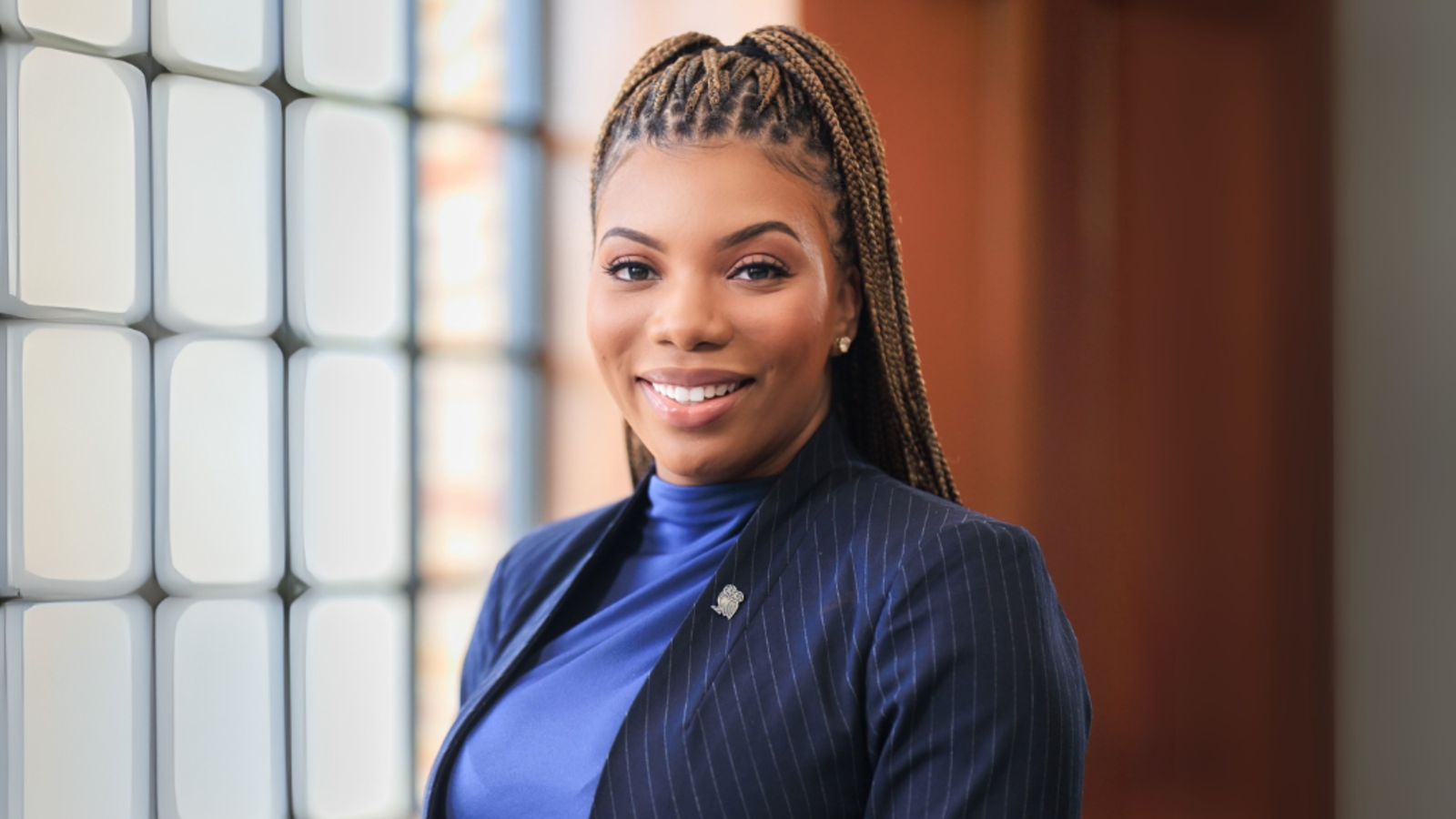
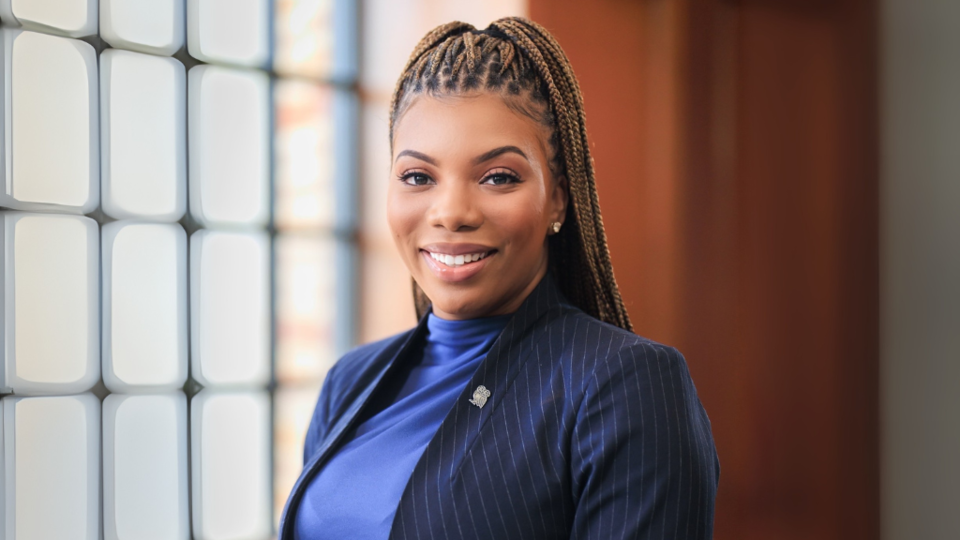
Rumie Ogunleye has built a thriving career in financial services and investment management. Now, she’s beginning a new chapter at Rice Business as a student in the Professional MBA Class of 2027. Continue reading Rumie’s profile to learn how she’s balancing a full life as a mom, portfolio manager and MBA student.
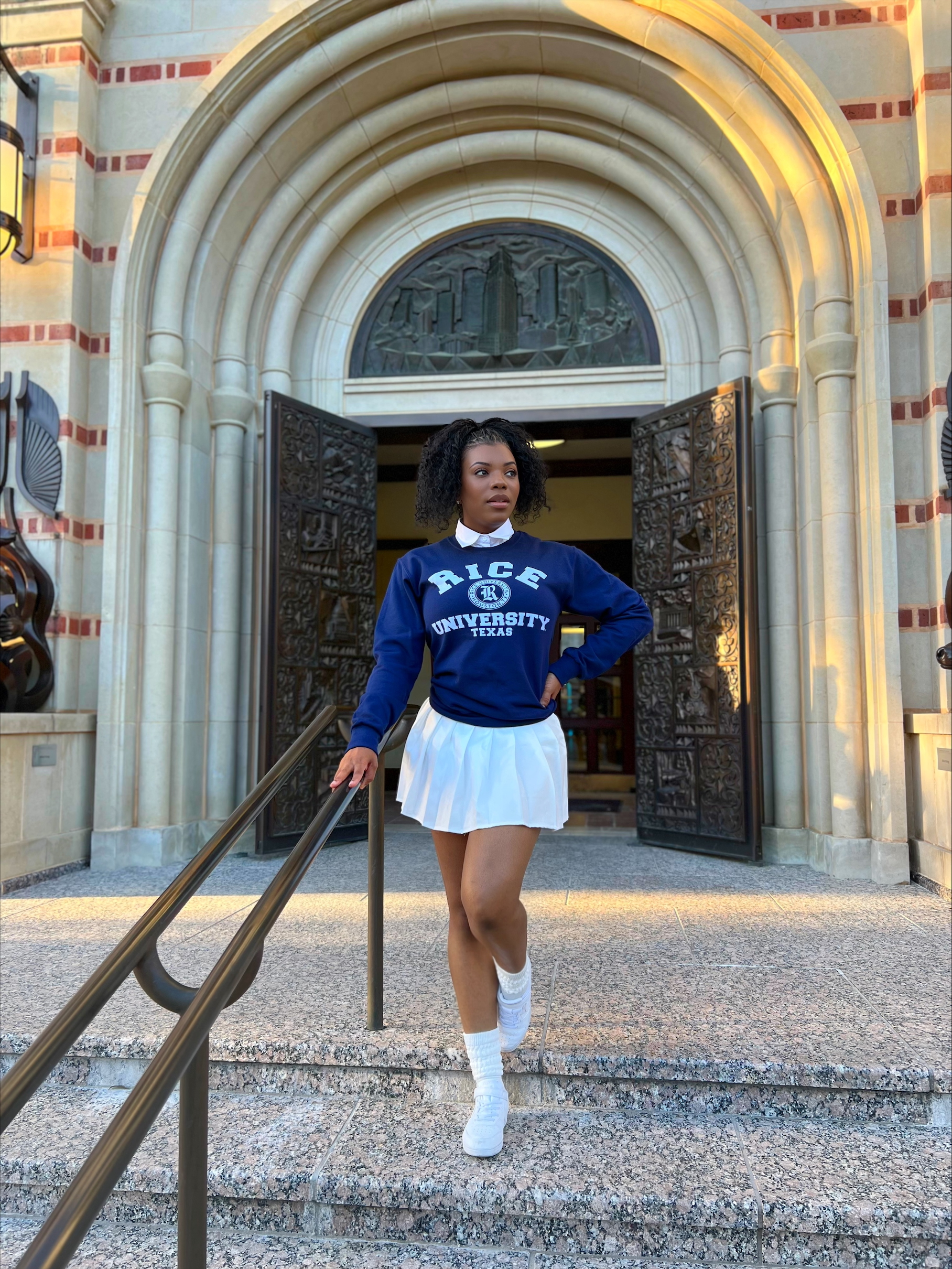
Tell us a little about your career and background.
I hold a Bachelor of Commerce from York University and currently work as an associate portfolio manager at City National Rochdale. I have more than 10 years of experience in financial services and investment management, spanning both retail and institutional markets across Canada and the U.S.
What is a fun fact about you?
I ran my first half marathon this January with a group of my best girls, finishing in 2 hours and 30 minutes! It was an exhilarating experience and one I’ll never forget.
Why did you choose Rice Business?
I chose Rice Business because of its tight-knit, collaborative community. I’m excited to learn from like-minded individuals who are passionate about growth, both personally and professionally. I also want to build on my leadership skills, and Rice’s program stood out as the ideal environment to do just that.
Why did you choose our Professional MBA program?
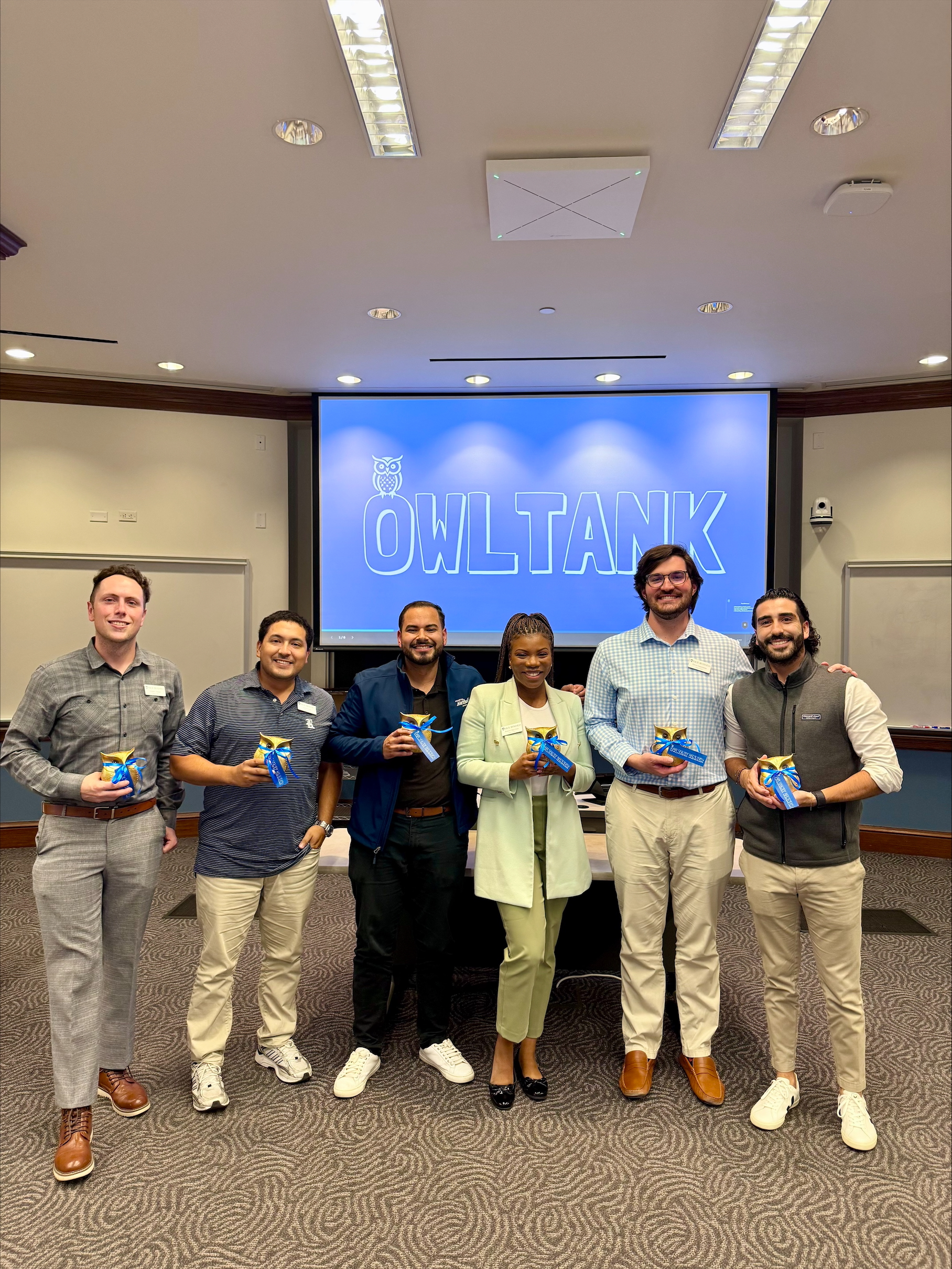
I genuinely love the work I do and the organization I work for. At the same time, I recognize there’s a gap between where my leadership skillset is today and where I want it to be. The Professional MBA program at Rice is a perfect fit, it allows me to continue growing in my career while learning from my peers and the rigorous Rice curriculum in real time.
How are you feeling about starting your MBA? What are you most looking forward to?
Honestly, I was a bit anxious at first. My schedule is full, I am a mom to two amazing little boys, started a new job in April, have been preparing for three licensing exams, and am striving to stay present and engaged in all areas of my life. But the support I’ve already received from my cohort has been incredible. I’m really looking forward to embracing the journey, learning from others and building lifelong connections.
How was your experience during launch week? What were your first impressions of the program and your classmates?
Launch Week was intense! I don’t think I’ve been that sleep deprived since my first baby was born! But it was also an incredible experience: fun, informative and energizing. It gave me a clear sense of the program’s culture and has set the tone for how I want to show up over the next two years.
Rumie Ogunleye is a Professional MBA student in the Class of 2027.
The Rice MBA
Why Rice Business Is a Top Choice for Investment Banking
With top connections and expertise in the energy sector, Rice equips you to step into investment banking with confidence. Add to that Houston’s affordability, business-friendly culture and network-driven opportunities, and you’ll see why Rice is a top choice for MBA students pursuing IB.
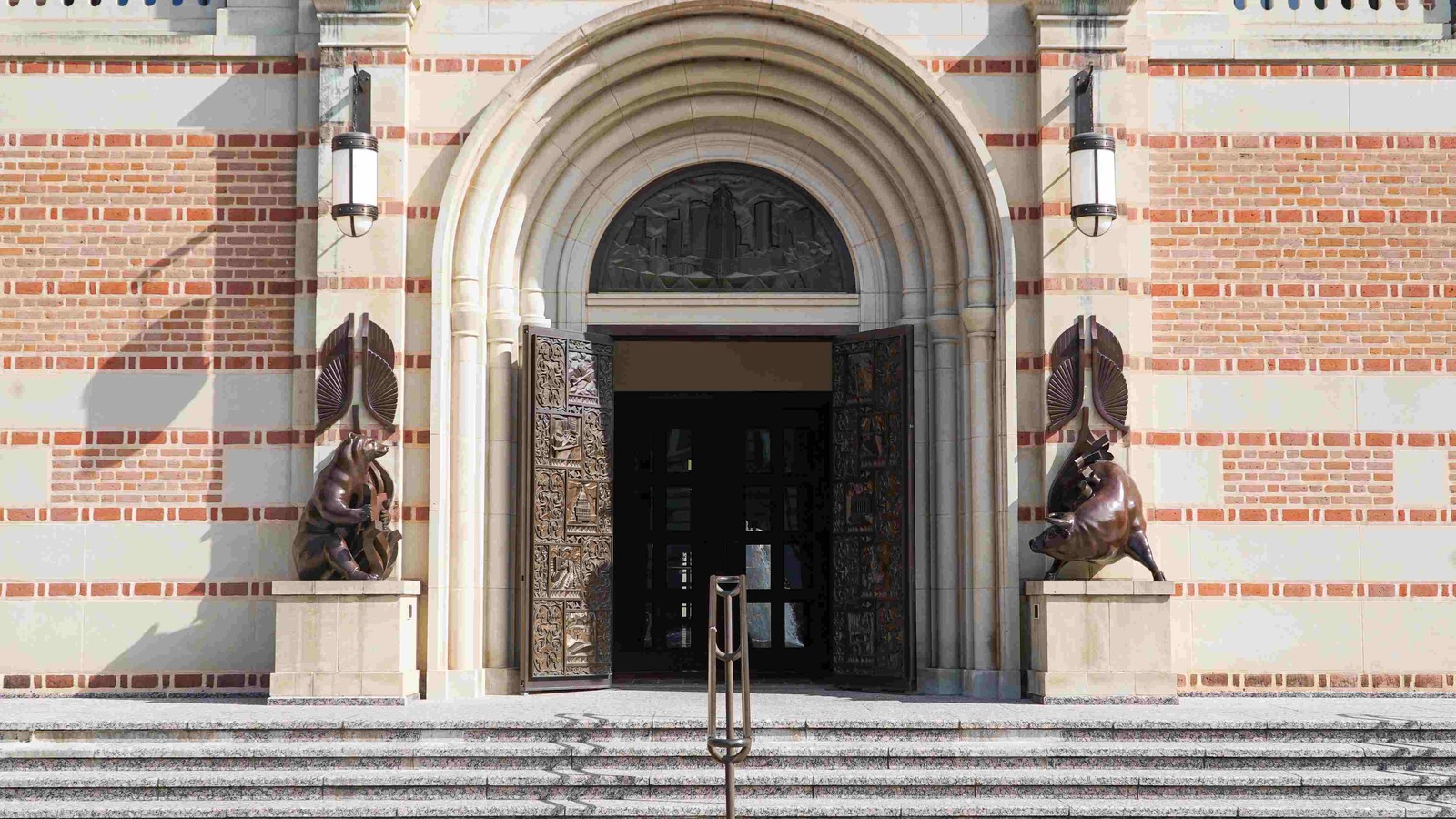

Investment banking isn’t only about Wall Street. It’s about being close to the industries that fuel global markets — and Rice Business is at the center of it.
If you’re looking into investment banking (IB), Rice Business offers a unique blend of location, industry exposure, professional networks and hands-on opportunities. Whether you choose our Full-Time or Professional MBA program, you’ll gain the support and resources to build a successful career in IB.
Houston: A Business-Forward City
Houston is one of the fastest-growing business hubs in the United States, creating strong demand for investment banking services. With Texas roots, a pro-business environment and an entrepreneurial spirit, Houston is a city that thrives on innovation. Here are a few perks:
- One of the nation’s highest concentrations of Fortune 500 headquarters
- A collaborative startup ecosystem through the Innovation District
- Central location with global connectivity through IAH and HOU airports
- Diversified economy in healthcare, renewables, life sciences, aerospace, technology and more (Financial Times)
Not to mention, Houston is extremely affordable for being the fourth-largest city in the country. For you, this means drastically better net compensation than you’d get in other metros like New York City, where living costs are between 85% to 146% more expensive (depending on source).
Learn more about why Houston is the perfect city to pursue your MBA.
Interested in Rice Business?
Local Markets, Global Reach
Rice Business’ prime location in Houston means our students benefit from proximity — from meeting bankers at events and coffee chats weekly and visiting offices to build relationships. That kind of consistent access is tough to find in places like New York, where the recruiting scene is more crowded and face time with firms is harder to come by.
Once students secure their internship, Rice MBA students get exposure to global deal flow given Houston’s central role in energy — offering insights and fluency that sets them apart.
The Rice-Houston IB Pipeline
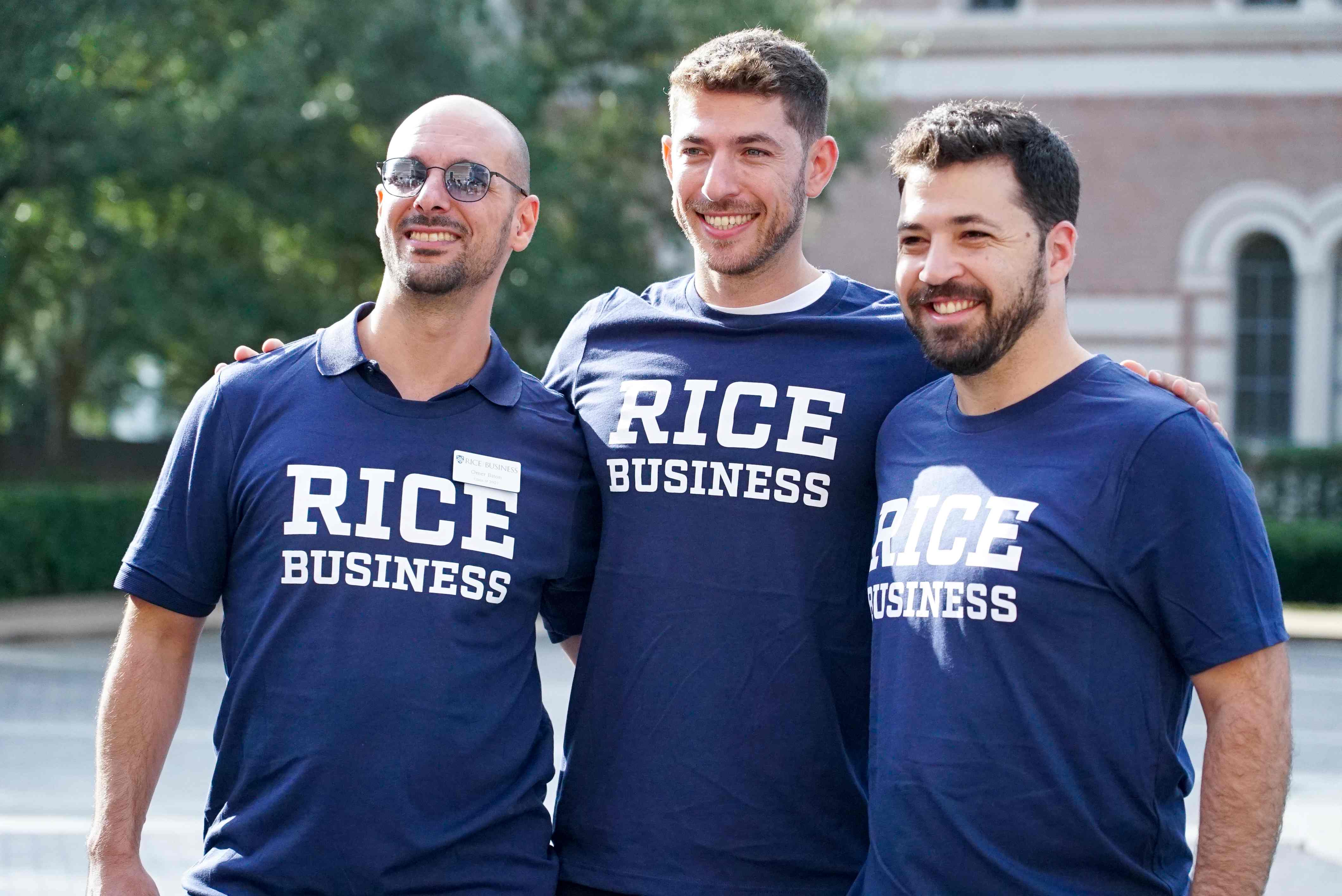
Did you know? Rice Business is the top MBA talent source for Houston investment banking.
With an average of 20 IB firms actively recruiting in Houston, our students have a stronger chance of securing offers compared to the ultra-saturated NYC market — entering a targeted, high-visibility pipeline through our network. Year after year, our students are recruited by top employers, including:
- Bank of America Securities
- Barclays Global Markets
- JP Morgan
- Piper Sandler
- Wells Fargo
Other recruiters include Citi Group, Goldman Sachs, Greenhill & Co, Guggenheim, Harris Williams, Lazard, Marathon Capital, Moelis, Morgan Stanley, TPH & Co., Truist and RBC Capital Markets — and most jobs are secured through the Rice Business community.
IB Support You Can Count On
As a leading program for finance, Rice Business is committed to giving students the knowledge, resources and network they need to succeed during their MBA and long after graduation.
One key student club is the Finance Association, which assists students with recruiting prep, coaching, networking, workshops and more. The club hosts programs regularly like “Financial Services 101: From Corporate Finance to Investment Banking,” which offers hands-on workshops, technical prep, peer feedback and real-world insights into deals.
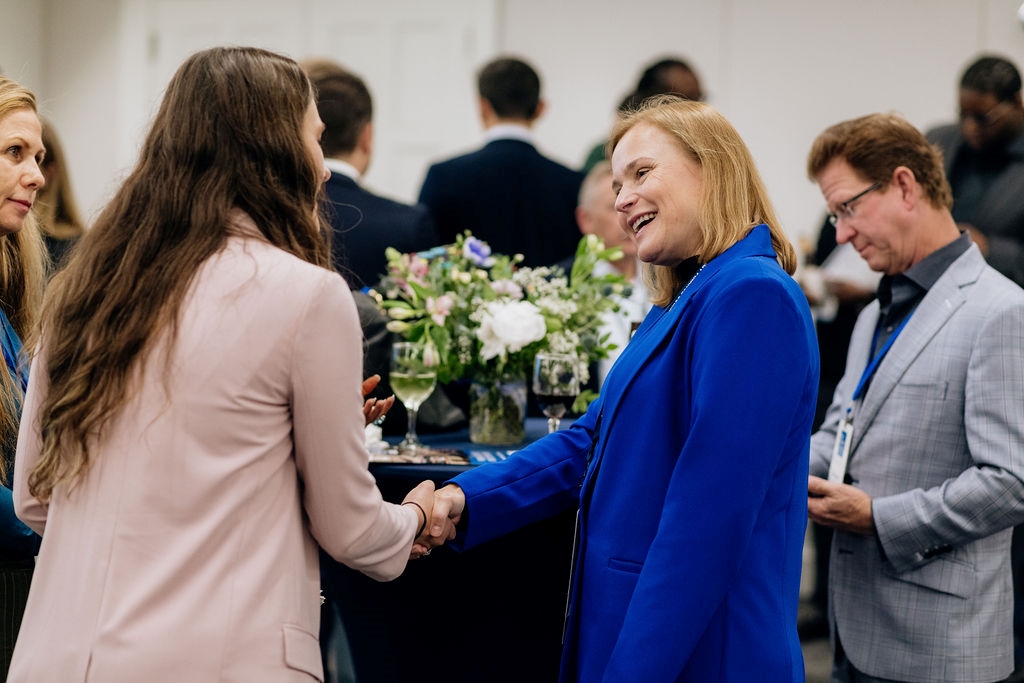
Every Rice MBA pursuing a career in investment banking has access to the resources, support and opportunities to land an IB role.
Strong Alumni Network, Strong Reputation
At Rice Business, our tight-knit community is the heartbeat of our school culture. This community is not only dedicated to helping you succeed; it’s nationally recognized for it.
- No. 3 Best MBA for Finance (Princeton Review, 2024-2025)
- 300+ alumni in Houston IB, a mighty number for our school’s size
- Networking through high-level conferences like the Rice Energy Finance Summit
Plus, your post-grad network doesn’t just include MBA graduates — you’re connected to Rice University alumni across disciplines in Houston, across the nation, and around the world. When you begin your MBA at Rice, you’re not starting your IB career from scratch. You’re joining a community that’s invested in your success for life.
You May Also Like
Keep Exploring
Coaching the Leaders of Tomorrow feat. Sujeev Chittipolu ’21
Season 5, Episode 16
Sujeev chats about his 16 years at Baker Hughes, his work with Amel Association Houston to give back to the community, and how the Rice MBA helped him put the final pieces together in his career.
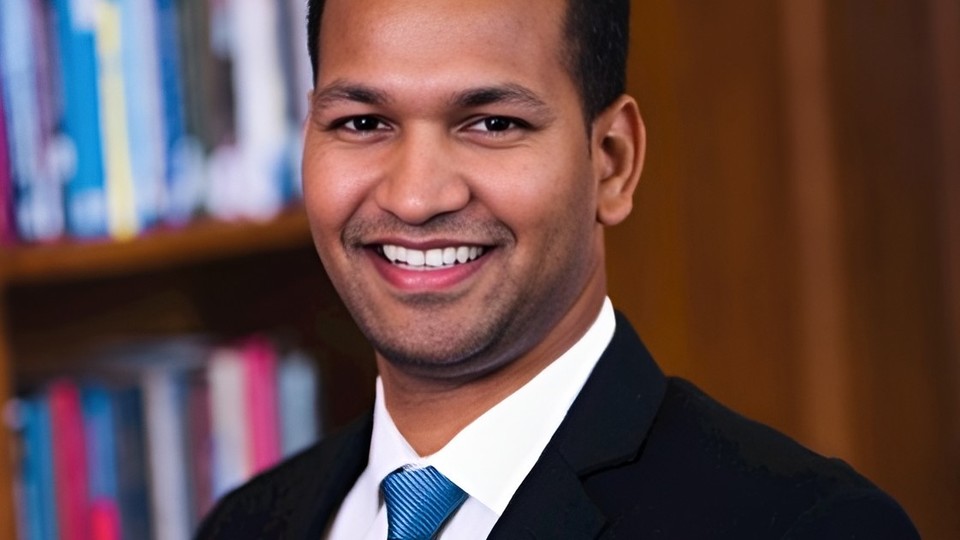
Owl Have You Know
Season 5, Episode 16
After many successful years as a mechanical engineer for Baker Hughes, Sujeev Chittipolu ’21 thought it was time to invest in his leadership potential. That led him to Rice Business.
As part of Rice’s Professional MBA program, Sujeev formed invaluable connections through programs like CoachRICE and even joined the board of one of his classmate’s nonprofits — Amel Association Houston. Through Amel, Sujeev is taking what he learned at Rice Business and building leadership coaching programs for underserved youth in Houston, particularly in refugee communities.
In this episode, Sujeev chats with co-host Maya Pomroy ’22 about his 16 years at Baker Hughes, how growing up in an entrepreneurial family shaped him, his work with Amel to give back to the community, and how the Rice MBA helped him put the final pieces together in his career.
Subscribe to Owl Have You Know on Apple Podcasts, Spotify, YouTube or wherever you find your favorite podcasts.
Episode Transcript
-
[00:00]Maya Pomroy: Welcome to Owl Have You Know, a podcast from Rice Business. This episode is part of our Flight Path series, where guests share their career journeys and the stories of the Rice connections that got them where they are.
Today's guest has built a career on both precision and purpose. From his early days as a mechanical engineer to now serving in a leadership role at Baker Hughes, Sujeev Chittipolu has spent more than 16 years mastering the art of engineering, leadership, and transformation. And along the way, he earned his MBA from Rice. But what makes Sujeev’s story even more inspiring is how he's using his expertise to give back. He talks with us about his work with Amel Association, a nonprofit dedicated to coaching underserved high school students, which he believes is crucial to moving our world forward.
In this episode, we'll dive into his journey from engineer to leader, the lessons he's carried from Rice into his career, and how he's turning professional success into a lasting impact.
Welcome to Owl Have You Know. I'm your host, Maya Pomroy. And our guest today is Professional MBA from the Class of ’21, Sujeev Chittipolu. Thank you so much for joining us, Sujeev.
[01:15]Sujeev Chittipolu: Thanks, Maya. It's my pleasure.
[01:17]Maya Pomroy: Can you imagine it's been four years since graduation?
[01:21]Sujeev Chittipolu: No, definitely not. I feel like I've been so close to Rice Business School since graduation, and then yeah, it doesn't feel like four years.
[01:30]Maya Pomroy: So, you started off as an engineer and you got your master's in engineering from Texas A&M. And you were really in that industry, in that realm, for many, many years. And the other thing that's really unique to your story is that you've been with the same company, Baker Hughes, for 16 years, which, hats off to you, that says a lot about the company and a lot about your loyalty.
[01:52]Sujeev Chittipolu: Yeah, definitely. I grew up on machines. My dad was a small business owner, so I was always into some kind of playing with equipment on machines. So, engineering was definitely something that I was aligned to. And yeah, Texas A&M was a great place to get in, get into the U.S., and learn everything that I had passion about. And then from there, Baker Hughes was a great journey. Within Baker, I think, yeah, it speaks to the people, the challenges that we try to solve, I think, adds up to me being there for so many years. And I've enjoyed every part of Baker Hughes, and yeah, it's just been a great journey.
[02:27]Maya Pomroy: And you've definitely worn different hats with the organization. So, you said that your dad was an entrepreneur. So, you have that in your blood as well. And you said you grew up enjoying engineering. Is that something that you've always wanted to be when you were little, when you grew up, you wanted to be an engineer?
[02:44]Sujeev Chittipolu: Definitely. My dad put me as his substitute manager when I was in, probably, sixth grade. So, I had to learn machines. I had to learn handling people right from my young age. It was, kind of, the hard way for, not just me, but my siblings, too. And engineering was, like, a natural choice. Somehow, I always enjoyed math. I always enjoyed science.
[03:05]Maya Pomroy: You're a STEM kid.
[03:07]Sujeev Chittipolu: Yeah, I was a STEM kid. Yes. So, that was something that I always had passion about. And yeah, that took me to undergrad. And my sister was a mechanical engineer, so I think I, kind of, drew into that, I guess. But everything, I think, well, it was always lined up to be at an engineering, definitely into mechanical engineering side of the engineering world.
[03:26]Maya Pomroy: Yeah. So, all in the family. So, where did you grow up?
[03:29]Sujeev Chittipolu: I grew up in a town called Nalgonda in Telangana in India. So, it's a small town. I went to the same school for 10 years, same sort of friends that I grew up with. And then I went to Hyderabad, which is like a metro where I did my undergrad and high school there. So, right after undergrad, I was in this phase I wanted to, kind of, decide if I want to get into workforce or pursue higher education. I tried different things and then I said, “Okay, building more skills, I think that's what I love, love solving new problems and learning something new.” So, that, kind of, put me in the direction of getting my master’s. And as I looked into the field, I think, there were multiple schools that I pursued, and A&M was one that I, kind of, aligned to, I think with the values they had and the traditions, it, kind of, brought me into the A&M world.
[04:16]Maya Pomroy: So, after you got your master's in mechanical engineering from A&M, is that when you started at Baker Hughes?
[04:23]Sujeev Chittipolu: Yes. I got recruited right after A&M into Baker Hughes. I started as a fresh engineer right out of the school, solving, you know, learning about the industry. And I've done almost five roles within Baker Hughes and different functions across them. So, I'm trying to learn our product lifecycle and how it operates and how it changes. So, I wore multiple hats throughout my journey. As any professional within Baker, I think, one, we are trying to solve some of the complex, both technical as well as business problems as we go. We are in a great phase as an industry. It's a challenging phase as a market. But every time, it's an opportunity to think outside the box, try new things, experiment and fail, and then learn and fail and grow. So, I think the people, the technology that we have, the teams that we work with are, I think, a huge part of the culture and what drives us to success.
[05:14]Maya Pomroy: You're a lifelong learner. And so, at what point when you were there did you decide, “You know what? Like, I think…” because you said you wanted to pursue… you have a master's already. And so, you're like, “You know what? I think I want an MBA.” What was it that was the catalyst for you?
[05:29]Sujeev Chittipolu: Yeah, a few things, right? As I said, my dad was an entrepreneur, so I always had the business or entrepreneurial mind or something associated with not just, like, one side of the problem, wanted to solve, like, bigger problems. So, I always wanted to learn more about, how does an enterprise operate? How do you make decisions differently instead of just one angle?
So, I think that's where the, kind of, spark that happened. And then I was trying, as I was growing in my career, I felt that having more leadership skills, building technical skills, right, from a business acumen standpoint. So, both of these were some drivers that I thought having an MBA experience would add value to me in terms of building my core skills, as well as, you know, leadership ability, which I can leverage as it goes. So, I think that was the, kind of, a driver, where I said, “Okay, as I go, I, kind of, need to work on these.” So, that's what, kind of, brought me into the MBA world.
[06:22]Maya Pomroy: So, that was in 2019. And so, why did you choose Rice? Was it more location-wise, or was it something? Because, you know, I mean, there's lots of other programs, but you chose Rice.
[06:30]Sujeev Chittipolu: Well, I guess one thing I wanted very clear was to be associated with the top quality institution, right? That was, kind of, the, you know, the experience that you get. The quality that you get is definitely different. So, that was one that I was always linked to. And I grew in the U.S. around Houston, and I was privileged to be influenced by Rice’s aura in some ways, I guess. But I was always, kind of, associated with some Rice friends or Rice team members.
But more than that, what felt, as I was going to the application, was the tight-knit culture of Rice. It's something that I didn't experience when I was applying to other universities. So, I felt that very hands-on, very early on during my phase. So, that, kind of, attracted me to the process, for sure.
And two, I wanted to have, not just technical skills, but have a holistic MBA experience, right? I didn't want to shy, you know, away from the other parts of the MBA. So, having that campus in Houston and be able to access other parts of Rice was, again, a huge factor for me where I could go to the Doerr Institute, I could go to the Lilie Lab, so I could, you know, all those things were straight factors which I thought where no other institution that offered me in Houston area or even in Texas to do a professional MBA.
[07:46]Maya Pomroy: And it's also interesting, because even in my cohort, you know, you have a lot of people that are from the engineering background and have all of those hard skills. And, you know, you were a STEM kid and you know how to do the math and you know how to do the accounting and you know how to do all those things. But how are those soft skills, those leadership classes that are a whole different ballgame and coming from, you know, a very science and math and technical backgrounds, because for me, the accounting classes are the scary ones, right? So, were the leadership classes and those, you know, that you took, how did you feel about taking those and writing papers on them?
[08:21]Sujeev Chittipolu: Yes. I would say, Maya, I think those were the ones that closed the puzzle for me, right? You know, you can build your technical skills, like, online. You can take a course and then build it, right? I think the leadership coaching that we've done through CoachRICE, I think the leadership classes that we've done through the program, I think those were the ones that differentiated. I think that that was… I keep telling Ruth Reitmeier, who is the director of coaching at Rice, I think she's been a huge influence for us. And I've told her many times that her offering of CoachRICE, her offering of leadership programs during the business school, I think that those were the sections or classes that closed the puzzle.
[09:00]Maya Pomroy: Close the puzzle, I love that. So, you did certainly take advantage of your time at Rice and were very much integrated in so many different organizations. CoachRICE was a leadership training program. And you were also very much ingrained in a lot of the other leadership opportunities and the service organizations.
One of the other things that I love about your story is you give back so much to the community, not just to Rice, but to Houston, and really, other organizations. So, one of the things that you did for your Capstone project at Rice was with a fellow classmate whose father started the Amel Association. And he launched the Houston chapter. And that was something that you did at Rice. So, can you tell me about Amel and everything that it does for the world, really, and for those that really benefit from it?
[09:50]Sujeev Chittipolu: Yeah. Amel Houston or Amel USA is a great story, as you alluded. Assaad Mohanna, who's our friend and classmate from the MBA program, he started the Amel U.S. chapter. And he pitched to us during our Capstone as we were exploring projects, he pitched to us and said, “Hey, I started this nonprofit. I'm trying to expand it, offer services to grow to be a more sustainable nonprofit organization.” We all thought it's a great program. Like, all of our team members had giving back, kind of, element in them.
Amel USA chapter focuses on a few things. As we were exploring the landscape of the target audience, we wanted to stay in the refugee space of one of the underserved community parts of Houston. So, as we were exploring the areas, we found that mental health wellbeing was something that is under…
[10:41]Maya Pomroy: Overlooked?
[10:42]Sujeev Chittipolu: Overlooked…
[10:43]Maya Pomroy: There was a gap, yeah.
[10:44]Sujeev Chittipolu: Yes, definitely. I think that was an area that was… not many services offered in that space. We did hundreds of interviews, talked to our target audiences. And then what we found was the youth in the underserved population is the one that's not being addressed quite a bit. So, we took that problem and said, “Okay, what can we do to the youth? What can we offer to make sure they're set right?” They go through a lot of trauma as they're coming to the country or even any underserved population in the country. They go through a lot of trauma. And we said, “Okay, how can we address that challenge?”
And what we offered was a leadership coaching program that we all gained through CoachRICE. We said, “Okay, what if we offer these services to these individuals?” And then we built a program around it, where, like, now, we have, we call it Youth Coach Leadership Program, where we offer leadership coaching to high school students in Houston area. We are also now expanding online virtual programs, but in Houston area where we have select schools in Houston ISD. And we pair them with coaches, who are ICF-trained or CoachRICE-trained and then give these students a leadership coaching opportunity.
[11:52]Maya Pomroy: So, you really took CoachRICE, right, the skills from that organization, and you parlayed it into Amel.
[12:00]Sujeev Chittipolu: Yeah, exactly. That is so true. Coaching is something that is typically in the professional world, kind of, limited to the senior managers, executives of the world, right?
[12:11]Maya Pomroy: Yes.
[12:11]Sujeev Chittipolu: You know, that's what you know. And then we said, “How can we democratize it? How can we make it to the most vulnerable in the youth?” It can be a life changer. We felt like, during our youth, if we had a coach who can guide us, it could change a life. So, that was the driver. And we've seen so many great stories, and I think it's been a rewarding experience.
[12:31]Maya Pomroy: Can you tell me a favorite story of someone that's been touched by Amel?
[12:36]Sujeev Chittipolu: Yeah. There are several. I would say one student named Musafa, initially not a student..he was active, doing his things, but he was not very verbal in the class. He would speak to the coach in a group setting. He was quiet. His teacher was saying, “Hey. We know he has potential, but we don't… you know, his background, his cultural experiences, et cetera, he wasn't able to discover himself.” So, as he worked with a coach, what we've seen was he could explore his inhibitions, he could set his goals, understand what were some of the drivers that were inhibiting his potential. And we've seen a clear change. He was about to quit high school.
[13:17]Maya Pomroy: Oh, wow.
[13:17]Sujeev Chittipolu: Yes. And working with the coach, it changed. He was over the process of a year, right? Two semesters. He became more verbal. He was confident in himself. He could understand what he wanted in life. He could realize, “Okay, I have a goal in my career. And then, okay, I can work towards it.” So, I think that one story, kind of, inspired more of us to come back and give. And it just, like, we've seen many of those, Maya, over the last three-plus years working with HISD.
[13:45]Maya Pomroy: So, you've been working with HISD for three years. And so, can you tell me what the future holds for Amel? Because you said these are the folks that are from CoachRICE that are the coaches for these kids. So, are you outgrowing the capabilities? Is it becoming a bottleneck, like what we learned about in business school?
[14:22]Sujeev Chittipolu: Yes. In some ways, yes. I think, in terms… We are expanding our coaching offering to virtual. We've done a campaign where… because sometimes we have to work with the school schedule. So, we have coaches who are willing to give back. So, we have opened up a, kind of, a virtual offering where you can coach any underserved community across the USA. So, that is the next phase of experimentation and growth that we are doing right now.
And two, in terms of coaches, yeah, CoachRICE has been a huge influence for us. I think they've been very welcoming in partnering. And we've been able to access some of the coaches. We want to get more coaches. You know, we are trying to work with the IC Houston chapter wherever we can. Any links we have there, we try to explore and try to get coaches. So, coaches who can speak Spanish would be a huge asset for us. So, yeah, I think growing virtually, accessing more coaches is where we are looking for next, Maya.
[14:52]Maya Pomroy: So, you definitely soak up every moment of the day. So, you've got, like, this wonderful job and you've got this leadership role at Baker Hughes and then, you know, you give a lot back to our community. And then you're also a dad with two kids. So, you definitely know how to manage your time. So, I wanted to talk a little bit about, if someone is thinking about pursuing an MBA, because I think that some people are like, “Well, you know what? I don't have that kind of time and I can't do this. And, you know, something that is, sort of, pie in the sky,” what would you tell those folks that are at that point in their career, like you were with yours, where you really wanted to build your skills and build yourself so that you could reach your full potential, right? What would you say to those that are thinking about it, that are, sort of, on the fence?
[15:37]Sujeev Chittipolu: I would say go for it, right? You know, there is no easy way or there's no shotguns in growth or in career. You have to differentiate yourself. You have to work hard to, one, grow yourself and enable to give back. I think both of these. So, yeah, if you are passionate, if you want to grow, it's not easy. The journey might be tough, but the efforts are always rewarding, right? Giving back, you can see one story that is shared. It changes your perspective on life. It gives you things that, how grateful you are to be able to give back. So, yeah, take the leap forward. I think you always find time. There are weekends that you can stretch. There are days, you know, you need, like, one or two hours a day that you can stretch and are always able to give back. So, yeah, I think, the leap forward, and it'll be worthwhile.
[16:20]Maya Pomroy: So, thinking back on before Rice and after Rice, what were some of the ways that your mindset has really changed because of the MBA that you worked for?
[16:31]Sujeev Chittipolu: Well, so many different ways. So many ways. I think the way I look at problems and the way I look at challenges is very different now. I'm, kind of, more holistic approach. I challenge myself much more based on, you know, the lessons I've learned during Rice. And even the leadership piece, right? Leadership, not just at work, but I think leadership goes all the way, starts from home, through the community at work. So, you set an example for yourself. You set an example for your family members. So, you're learning always, trying to grow. So, I think Rice has influenced me personally, professionally. And I think I keep continuing to reap rewards as I grow personally, as well as professionally.
[17:10]Maya Pomroy: So, since you’ve mentioned growing professionally, tell me about the transition. Because you did say that you've worn lots of different hats at Baker Hughes. So, tell me about what you're doing for the organization now, and really, how you've had to pivot in the ways that you were before to the way that you are now.
[17:28]Sujeev Chittipolu: Yeah. I was in the core, definitely, in the technical functions. I was able to, after the MBA at Rice, I could do assignments where I could extend some of the product line or business skills. Even now, I try to work on projects that are more transformational, bringing both my technical versus business skills where I look at the problem much differently than before. I asked questions which Sujeev before MBA wouldn't ask, because I've seen things differently. I have a different perspective of how I look at our business, what our leadership wants in terms of our goals. So, you know, able to solve those in a different way, efficient way, I think, is what I think I add value now.
[18:06]Maya Pomroy: So, it's a lot about the efficiency, for sure.
[18:08]Sujeev Chittipolu: Yeah. And also, holistic view of the problem, right? I think, you challenge yourself, okay, what are you missing? What are your blind sides? In the past, you would go with a solution and then, kind of, run with it. Now, I saw, okay, what else? What else is there? What could we do differently? Like, how else can we collaborate better with other teams? Can we use other partners who can drive this more efficiently or get the goal much better way?
[18:30]Maya Pomroy: Well, and it's interesting that you say collaborating with teams because that's really the core of how the MBA works, right? A lot your classes, if not all of them, are team-based, you know. And so, you're working with teams. And I think that it's interesting that you say that because now you're trying to view things through that lens of collaborating with other teams in order to build more efficiency and more productivity.
[18:51]Sujeev Chittipolu: Yeah, definitely. I think, in the past, you know, I would work to only solve the problem. Then, I realized, okay, you have a team that, you know, you can all leverage individual core strengths and then drive much more efficiency. Even at Amel, like, we all wear different hats. You know, everybody has different personal skills, professional skills. We leverage it to our extent and then say, “Okay, one of you can do this. One of you can solve another problem.” And, you know, we move much faster and much more efficiently.
And during the MBA, I think the biggest advantage was the network, right, not just in terms of the depth of it, but I think you grow in depth of the relationships that you build, and you learn how to give back because somebody else is giving back to you. And it's a great circle that we can all gain from.
[19:33]Maya Pomroy: Yeah, I think they definitely do that with purpose in terms of how they create the different teams together. And they really take people from different walks of life. And then they group you together. And then you have these deliverables that you have to do. And you're like, “Wait a second. Like, I just met these people.” So, over your time at Rice, tell me about your team and if you're still in touch with them, because I'm pretty sure you probably are, yeah?
[19:59]Sujeev Chittipolu: Yes, we are. I think we had an amazing team with different personalities, amazing skills. I think I couldn't have asked for a better team. We stuck together.
[20:07]Maya Pomroy: I think everybody says that about their team. No, my team's better than your team.
[20:13]Sujeev Chittipolu: Yes. We cherish our relationships. We enjoyed the process. I think we grew together as individuals. And everyone brought such different unique skills to the table. I think we had engineers, we had marketing team members, we had football players.
[20:28]Maya Pomroy: You had a football player? That’s amazing!
[20:29]Sujeev Chittipolu: Yes.
[20:31]Maya Pomroy: We didn't have one of those.
[20:32]Sujeev Chittipolu: Yes, we have a veteran. So, I think it was such an amazing experience. I think, learning from the team, giving back, I think we all rooted for each other. I think that was the biggest support system that I had. And we go debate ideas. And I think we’re all rewarded. And it's great to see everybody's families growing up and them being successful in their careers. Couldn't be more proud of our team.
[20:52]Maya Pomroy: So, what was one of your favorite classes or favorite professors or favorite experiences when you look back?
[20:58]Sujeev Chittipolu: Oh, man, that is such a tough question. I would pick two.
[21:02]Maya Pomroy: Two? Okay.
[21:03]Sujeev Chittipolu: Yes. One is Al Danto’s entrepreneurship courses, right? You know, the New Enterprise Acquisition. Al, he is so approachable. It's easy to… and his knowledge is just amazing. I think he gives back so much to, not just Rice, but to the Houston community. And I think Al's been a great teacher and mentor for us.
And then the second I like Vikas’ strategy, Customer-Based Strategy. And he rips you apart, and then he teaches you what is that that you actually need as a company. Like, focus on the things that your customer wants. Focus on the things that your stakeholders want. So, I think those were a few things that definitely stood out. And I can't speak enough of the leadership by exposure that I had at Rice. I think it teaches you from serving yourselves to serving your team, serving the community. I think it just shifts your mindset in terms of what leadership means. So, yeah, I think so many more. I can keep going, Maya.
[21:59]Maya Pomroy: No, those are great. And so, since you've graduated, since, like I said at the beginning, it's been a couple years. So, how have you stayed engaged with Rice?
[22:07]Sujeev Chittipolu: Yeah, in many ways. One, I go back to Rice Business Partners. I think that is such a huge thread that keeps the business...
[22:13]Maya Pomroy: Can you tell us about Rice Business Partners?
[22:15]Sujeev Chittipolu: Yeah. Rice Business Partners is the association, you know, the alumni part of Rice Business that connects the business school with the business world, right?
I think that is where the rubber meets the road, I guess, in some ways.
So, it's such a huge partner in the community, in the business world, that, me, as alumni, I can go back, attend these events where I could get to attend events with the CEOs, I can get to attend meetings with some of the great business leaders in the community who are doing transformational things.
So, I think that keeps me very connected to the business school. As I said, CoachRICE, staying connected with the coaching team with Ruth and her team, I think, has been a great, again, relationship that we continue to build.
So, whenever I get an opportunity, I'm there. And, you know, Owl Have You Know, there are multiple interviews that you've done and Scott has done in the past where we could go in person. So, I think all of these are the ones that bring us back to the Rice Business world.
[23:09]Maya Pomroy: Yes. I always find it fascinating because I've gone to the Rice Business Partners round table discussions, which, you know, for those that don't know, they're very intimate opportunities to sit and to learn from either, you know, a business leader, a CEO, or even a professor at Rice. And it's like a lunch and learn, almost, where you just come and you have lunch.
And what's great about that is that there's people from across the board, alumni from the very beginnings of Rice Business, all the way through today. And it's such a wonderful way to stay integrated in the Rice community and the alumni community. And there's no other opportunity, really, to do that.
And you get this great lunch, and then you also get an opportunity to learn. So, you never stop learning. It's really, just because you graduate doesn't mean that your lifelong learning has somehow, you know, put a pause button. It's continuous for the rest of your life.
[24:03]Sujeev Chittipolu: Yeah. I think that's why there was one takeaway during the MBA, right? The growth mindset at the start of the whole program. I think that is, you know, you are always learning, you're always growing, you're always trying to give back and help everyone around you. I think it's a great way to put it. You know, you're always learning as part of the association.
[24:21]Maya Pomroy: Yeah. So, tell me what you're most looking forward to in the next couple of years for your own career and profession.
[24:26]Sujeev Chittipolu: Yeah, a lot of things, both personally and professionally. I think, professionally, I would say I'm still in the growth phase. I'm a mid-career professional, right? I'm trying to build those leadership skills to get to the next stage of my career, which is I'm trying to leverage my business school, my technical skills to get there.
Personally, now, Amel, we are trying to also go into the physical health side of the support to the community. So, we are trying to do activities, outside leadership coaching, to expand services there. We try to go back and give services wherever the community needs us. With the recent floods in the Hill Country, we were able to put together a package and then give back something to the community.
So, I think that's a great area where we leverage our relationships and then be able to give back. And I have a growing family, and I'm very excited to see how our kids and my wife, we all grow as individuals, as well as professionals. So, a lot to look forward to, a lot to be grateful for. And yeah, continue to grow.
[25:22]Maya Pomroy: So, do you have many engineers-mini? Like, tiny engineers? Are your kids into engineering? Are they STEM kids, too? Or are they on a different path?
[25:29]Sujeev Chittipolu: They're doing everything. I don't know, they want to play for professional sports. They want to learn music. So, I let them do whatever they are enjoying. I think, yeah, they're definitely into science and math, so I know they have that side of them. But yeah, I think this is a beautiful country where you get the opportunities that you can see and able to grow and give back.
[25:48]Maya Pomroy: And what a wonderful example you are to them and to all of us.
[25:53]Sujeev Chittipolu: Yeah. I think that, as I said, it's a blessing, it’s a journey that I'm definitely proud of and definitely very grateful for to be able to do.
[25:59]Maya Pomroy: Any final thoughts that you'd like to share with our listeners?
[26:03]Sujeev Chittipolu: Yeah. First, I want to say thanks to you. I think we've been partners in the community. So, thanks to the work that you do and thanks for your inspiration. And anybody who is trying to pursue an MBA or thinks that you do not have time, you can do it. There are so many examples once you get there. I think the MBA experience, definitely, at Rice is life-changing. It'll change you both professionally, as well as personally. And you can soak in the experience and reap rewards throughout your career, as well as your personal life. And looking forward for many more stories from you.
[26:38]Maya Pomroy: Well, and I'm looking forward to what's next for you. I mean, maybe another 16 years at Baker Hughes, they'd be lucky to have you.
[26:44]Sujeev Chittipolu: We'll see. We'll see how it goes. But yeah, definitely, it's been a great, great journey.
[26:49]Maya Pomroy: For sure. Well, Sujeev, it's been a pleasure. Thank you so much for taking time today to chat with us and to share your story and all of the good that you're doing for, not only the Rice community, but for the world.
[27:00]Sujeev Chittipolu: Thanks, Maya. Thank you for the opportunity. And looking forward to staying in touch.
[27:03]Maya Pomroy: Thanks for listening. This has been Owl Have You Know, a production of Rice Business. You can find more information about our guests, hosts, and announcements on our website, business.rice.edu.
Please, subscribe and leave a rating wherever you find your favorite podcasts. We'd love to hear what you think.
The hosts of Owl Have You Know are myself, Maya Pomroy, and Brian Jackson.
You May Also Like
Houston to welcome national, global energy startups, innovators to showcase region’s leadership at citywide conference, co-hosted by Rice Alliance
Houston Energy and Climate Startup Week begins Sept. 15 and exemplifies how Houston is developing and scaling real solutions for the challenge of meeting growing global energy demand while reducing carbon emissions.
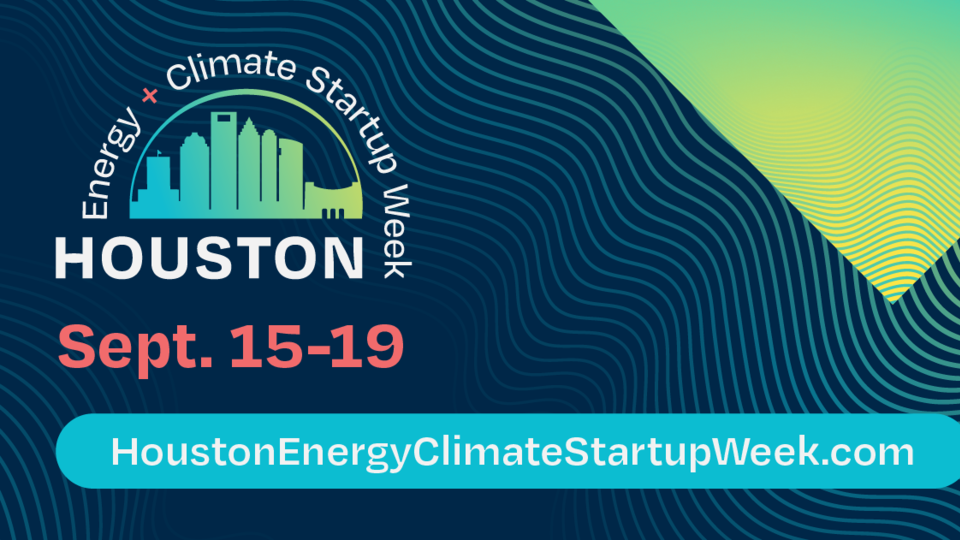
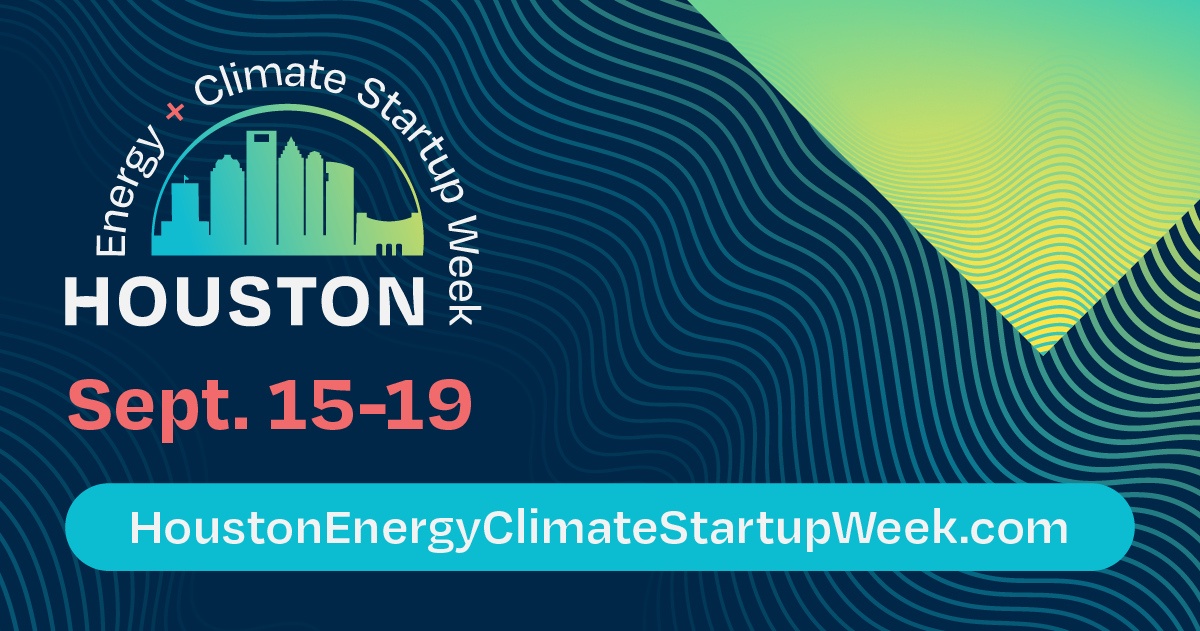
Houston Energy and Climate Startup Week begins Sept. 15 and exemplifies how Houston is developing and scaling real solutions for the challenge of meeting growing global energy demand while reducing carbon emissions. Born out of a mission to showcase the cutting-edge technology development and energy transition leadership happening in Houston across multiple flagship organizations, the second annual week of events and activations runs through Sept. 19.
Rice University’s Rice Alliance for Technology and Entrepreneurship led the founding of the week last year, alongside other regional leaders, and returns to host events that anchor the week and bring together global energy startups and investors in the Houston energy ecosystem.
Startups and later-stage ventures solving energy and climate challenges will have the opportunity to present their technologies and solutions to top venture capital, private equity and corporate strategic investors. These capital sources are coming to Houston from across the country to engage with startups and take a deeper look at the city’s ecosystem.
Speakers, panels, pitches and discussions will take place across Houston with several hosted at the Ion, the heart of Houston’s innovation corridor in Midtown powered by Rice.
“Last year’s inaugural week was incredible, and we’re excited to build on the momentum this year,” said Brad Burke, associate vice president for industry and new ventures at Rice Innovation and executive director of the Rice Alliance. “We saw more than 125 startups and welcomed more than 1,400 attendees in 2024 throughout 30 individually hosted events — numbers that will only increase as this week becomes a Houston tradition for groundbreaking technologies and innovations.”
The Rice Alliance Energy Tech Venture Forum, in its 22nd year, has grown significantly since its inception and is widely considered the premier venture capital energy tech conference in the region. As an anchor event for the week, 75 investor groups will participate in one-on-one venture office hours and will take more than 650 individual meetings. Spanning nine countries and 19 states and having raised $780 million in funding, nearly 100 energy ventures will participate in this event. More than 40 speakers, from innovation executives at global energy corporations and leading venture capitalists to artificial intelligence experts in energy, will speak during the forum. Registration is currently open for the Sept. 18 conference.
Another featured event hosted by the Rice Alliance is the Ion Open House Sept. 17. Startups, corporates and community spaces will open their doors with tech expos and startup booths in a rare opportunity for guests to experience multiple floors and suites throughout the innovation hub. Registration is limited and open through Sept. 16.
A few of the week’s other events feature the next generation of talent, including the Sept. 16 Activate Houston 2025 Cohort gathering; the Sept. 18 Greentown Labs Accel Showcase with startups led by people of color and other underrepresented founders; and the Sept. 19 Halliburton Labs Finalists Pitch Day which features new energy technology.
This community-led effort is coordinated by a group of regional organizations, academic institutions and corporations in the Houston ecosystem, including Rice Alliance, Halliburton Labs, Greentown Labs, Activate, Collide, New Climate Ventures and the Houston Energy Transition Initiative. Additional leading organizations are hosting events including global trade organizations, deep-tech investors, universities, global corporations and more.
See the full agenda here.
You May Also Like
Future of business strategy must be customer-focused, Rice Business expert says
Vikas Mittal, J. Hugh Liedtke Professor of Marketing at Rice Business, directs C-CUBES, where research on customer-based strategy drives insights for organizations to improve value, engagement and long-term performance.
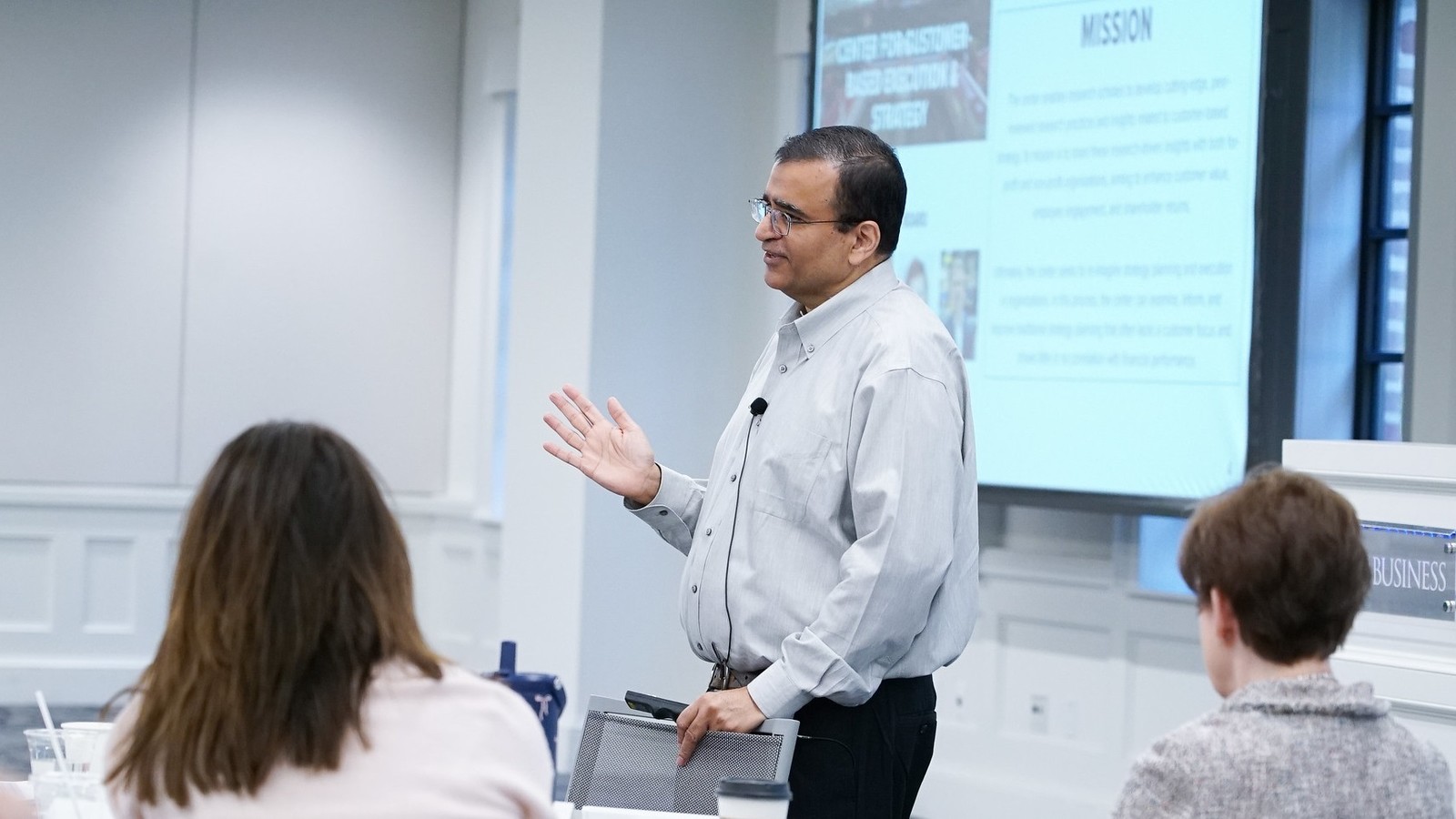
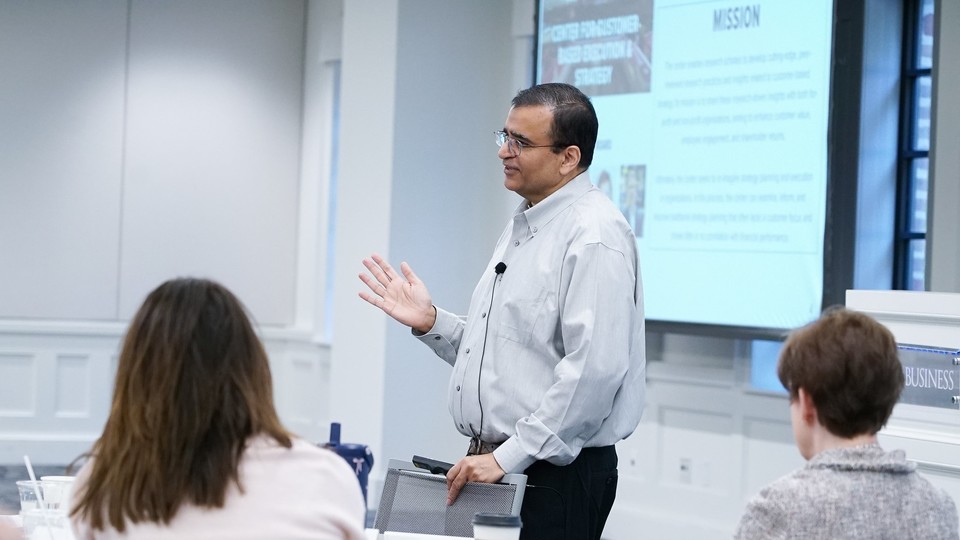
At Rice Business, the Center for Customer-Based Execution and Strategy — better known as C-CUBES — helps scholars excel in rigorous, peer-reviewed research focused on customer-based strategy.
Led by Vikas Mittal, faculty director and the J. Hugh Liedtke Professor of Marketing, the center’s focus is turning research into real-world impact. Whether it’s a Fortune 500 company or a nonprofit, C-CUBES shares insights that help organizations improve customer value, boost employee engagement and drive stronger returns for shareholders.
“Too often, traditional strategic planning misses that mark,” Mittal said. “It ignores customers and employees and doesn’t tie clearly to financial performance. C-CUBES is out to change that. We want to rethink how strategy is planned and executed and put the customer at the heart of the process. Customer value is the driver, not a consequence of successful strategy.”
Mittal has published extensively on strategy and decision-making in outlets such as Harvard Business Review, MIT-Sloan Management Review, Organization Studies, Organization Science, Journal of Psychiatry, Management Science, Journal of Marketing Research, Marketing Science and Advances in Skin and Wound Care. He is a past editor of the Journal of Marketing and Journal of Marketing Research.
C-CUBES’s 2025 Customer Value Report, based on a nationwide survey of 3,000 U.S. residents, is a powerful resource for scholars, business leaders, consumer advocates and regulators to better understand what people really value today.
C-CUBES hosts events for senior leaders in both the business and nonprofit worlds, creating spaces where research meets real-world experience. Ultimately, the center seeks to reimagine strategy planning and execution in organizations at large.
“We’re proud to be a hub for talented scholars in fields like accounting, strategy, marketing, organizational behavior, finance and operations — sectors that are integral to Rice Business’ curriculum and expertise,” Mittal said. “And thanks to our home in Houston and our strong connections in industries like energy, health care, education and tech, we’re helping turn academic insight into meaningful community impact.”
Now, C-CUBES has created the Outstanding Impact Award for Research on Customer-Based Strategy and Implementation. The award is given to a published, peer-reviewed article that uses rigorous research to exemplify the mission of delivering research with insights focused on customer-based strategy. The selection committee this year included academics from Rice Business as well as Babson College and the University of Sydney Business School.
This year’s winner is “Stakeholder engagement strategies, national institutions and firm performance: A configurational perspective,” published in Strategic Management Journal in 2020 by Kamini Gupta, Donal Crilly and Thomas Greckhamer. Their findings show that the engagement strategies associated with high performance vary according to local institutional context and company characteristics.
Honorable mentions:
- Organized Complexity of Digital Business Strategy: A Configurational Perspective” by YoungKi Park and Sunil Mithas, published in MIS Quarterly
- “Dealing with Revered Past: Historical Identity Statements and Strategic Change in Japanese Family Firms” by Innan Sasaki, Josip Kotlar, Davide Ravasi and Eero Vaara, published in Strategic Management Journal
- “Collaborative Market Driving: How Peer Firms Can Develop Markets Through Collective Action” by Andre F. Maciel and Eileen Fischer, published in the Journal of Marketing
The award will be given at the 2025 Rice Customer Based Strategy Symposium held Nov. 18 at the Ion, Houston’s innovation hub powered by Rice. Since 2010, Rice Business has hosted the symposium as a forum for sharing cutting-edge ideas in customer-based strategies with academic research, industry trends, insights from CEOs and conversations with senior executives.
To learn more about C-CUBES and other research initiatives from Rice Business, visit here.
You May Also Like
New York Times counts Montrose restaurant ChopnBlok among 50 best restaurants in U.S. list
Houston’s ChopnBlok, founded by Chef Ope Amosu '14, was named to The New York Times’ 2025 list of America’s 50 best restaurants. The Montrose spot earned praise for its vibrant West African dishes and was hailed as a standout dining destination.
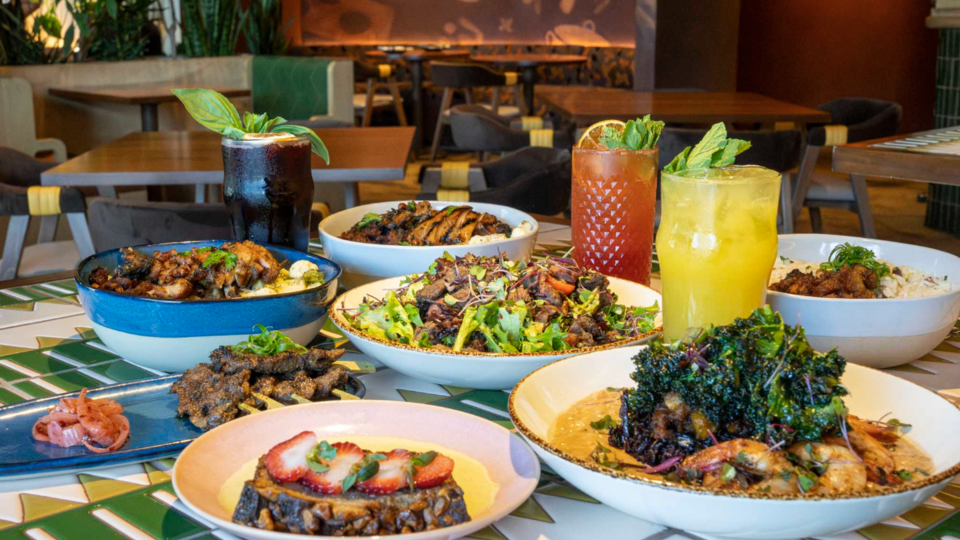
Our Top Tips for Applying to the Rice MBA This Year
Applying to an MBA program doesn’t have to feel overwhelming. These tips from the Rice Business admissions team will help you create a strong, authentic MBA application and find the right program fit.
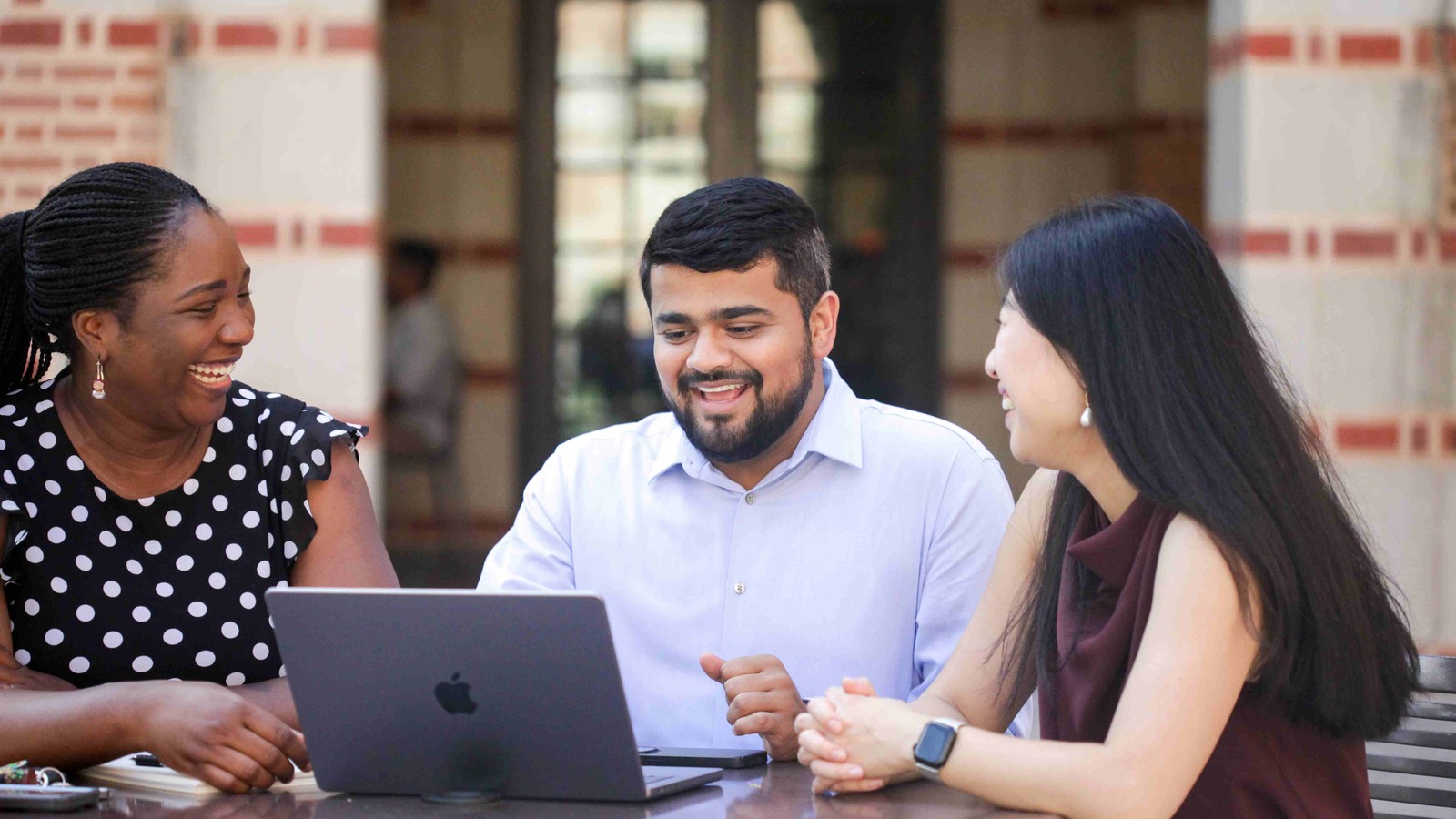
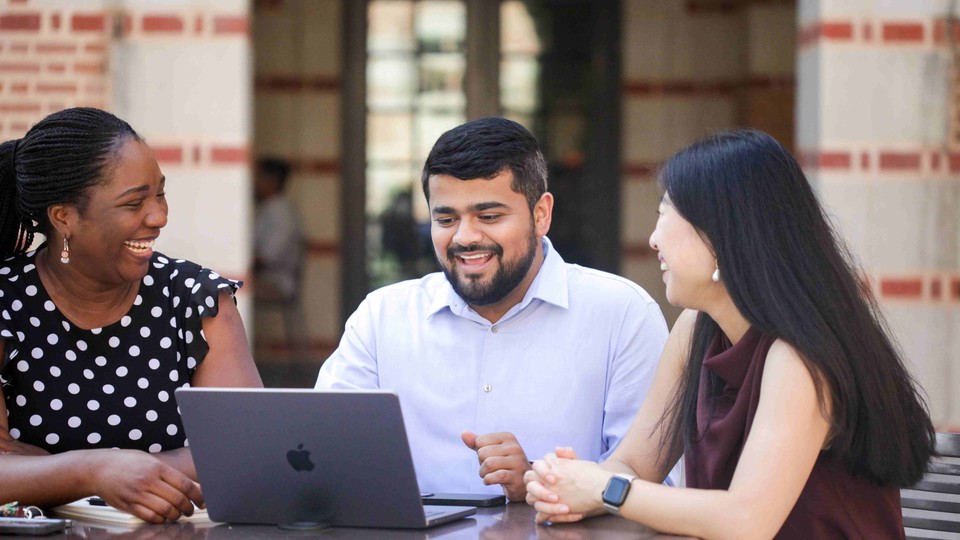
Applying to business school can feel overwhelming. Between your essays, resumes, recommendations, interviews, test scores and campus visits, there’s a lot to think about. In reality, though, putting your best foot forward comes down to a few core principles. At Rice Business, we want you to succeed, so we asked our admissions team to share their best tips for applicants this year.
Tip 1: Reach out to a Rice MBA recruiter
Taking the first step toward an MBA can be daunting, but you don’t have to do it alone.
“Our Rice recruiting and admissions team is here to guide you, whether you’re at the very beginning of your MBA search or scrambling on deadline day,” says Steve Summers, manager of MBA recruiting, working professional programs. “No part of your MBA journey should be done alone — including the application.”
Don’t hesitate to reach out with questions.
Tip 2: Attend Rice Business events.
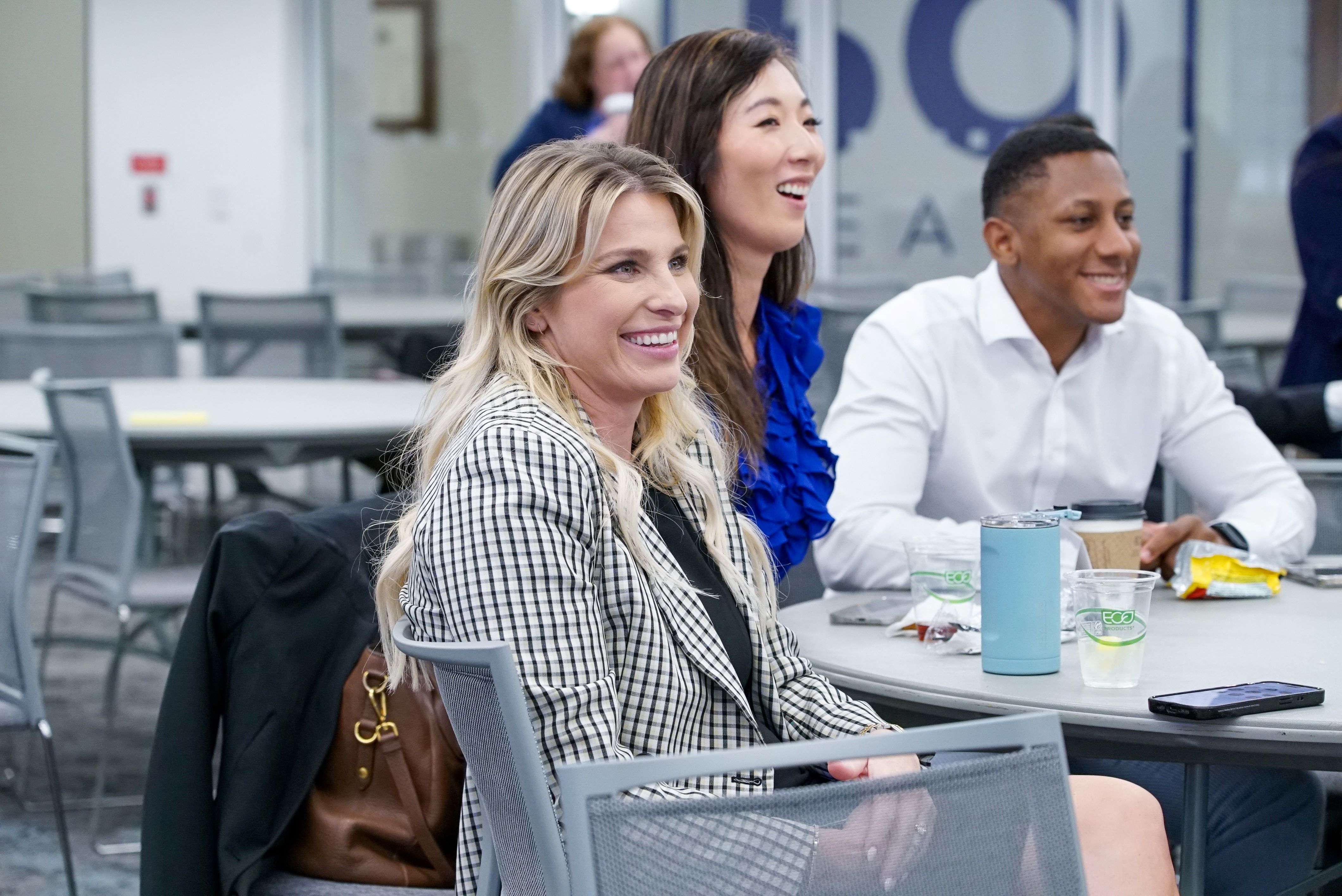
Info sessions, classroom previews and networking opportunities are great opportunities to gather information. They also show us you’re serious.
Schools notice when applicants are invested in learning about the program. And when you step foot on campus, you’ll not only connect with Rice MBA students and alumni — you’ll get a real sense of the energy and culture that can’t be captured on a website or in a brochure.
Tip 3: Be yourself!
The strongest MBA application is the one that reflects your authentic self.
“The best Rice MBA applicant is you,” says Sofia Cormack, assistant director of recruiting and admissions. “That means letting your personality, experiences and background shine through in your essays, interviews and interactions. Don’t try to guess what we ‘want’ to see — authenticity always wins.”
Interested in Rice Business?
Tip 4: Make your first impression count.
First impressions matter. Wondering how to prepare for your MBA interview?
“Show up to your interview dressed professionally,” Summers says. “Beyond attire, that impression extends to your tone and preparation. Do your research, bring thoughtful questions and make sure you demonstrate interest in the program.”
Tip 5: Avoid mixed messages.
Think of your application as building a brand. You want to be consistent, clear and memorable.
An MBA application isn’t just a collection of parts — it’s one story. Your resume, essays, recommendation letter and interview should all reinforce the same themes and strengths. Avoid contradictions or mixed messages.
Tip 6: Engage with the Rice Business community.
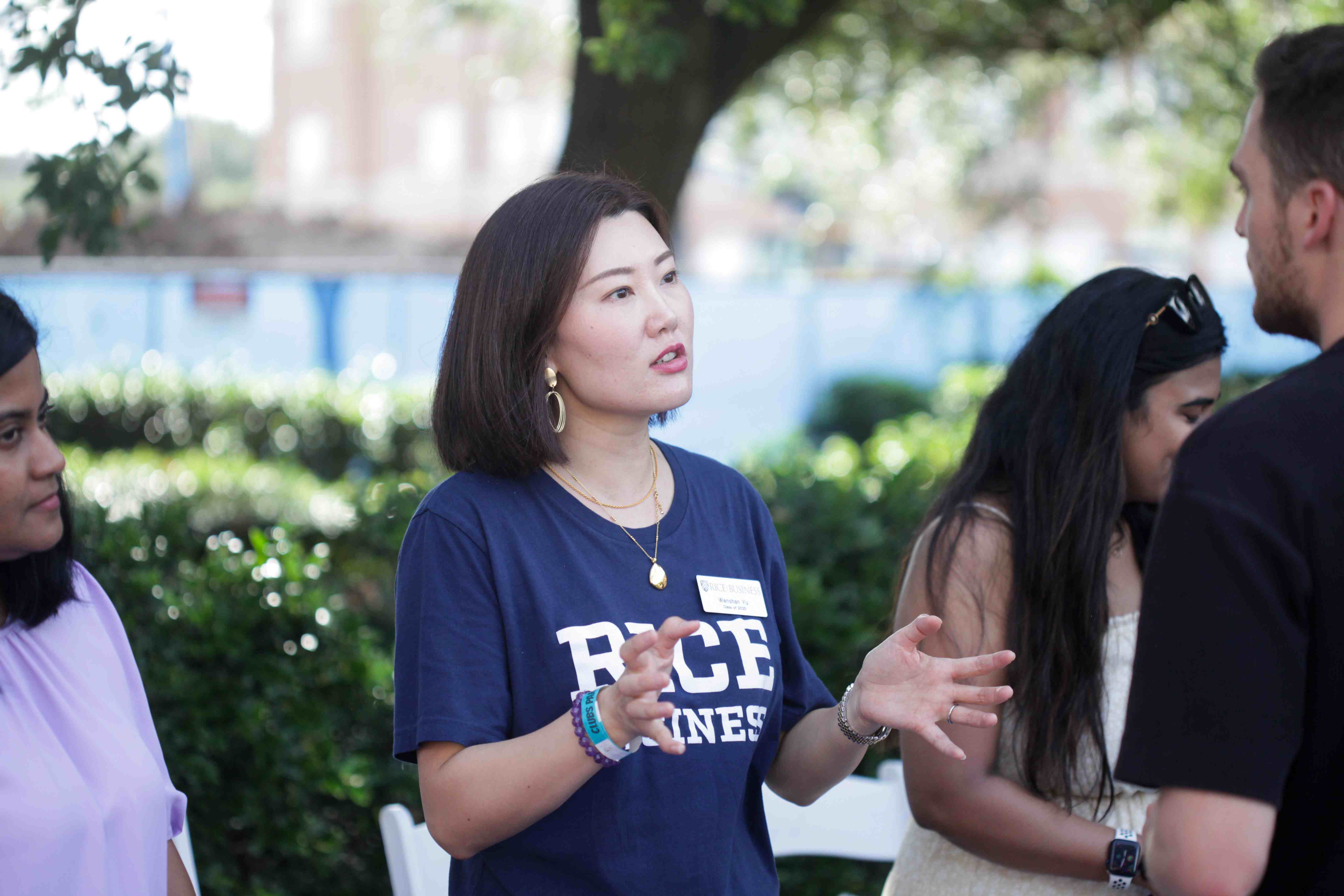
The best way to know if Rice Business is the right fit is to talk to people who live the experience.
Follow us on social media. Connect with students, alumni, faculty and staff. Ask people about their journeys and what makes the Rice MBA unique. These conversations will not only inform your decision but also give you richer insights to bring into your essays and interviews.
Tip 7: Talk with your recommender.
A strong letter of recommendation doesn’t come from sending a quick email request.
“Schedule time with your recommender to explain why you’re applying, what you’ve accomplished, and why you’d make a great candidate,” Cormack says. “This not only helps them write a better letter, but it also strengthens your professional relationship.”
Tip 8: Double-check your app.
From the resume to the recommendations, there are lots of components you’ll need to submit.
Before submitting your application, make sure you have all materials covered for your preferred program. In our MBA Admission Guide, you can download a detailed checklist to make sure every item makes its ways to our recruiting and admissions team. Plus, if you apply early, you’ll be able to take advantage of more availability in your desired program and early opportunities for exploring, networking and preparing for the journey ahead.
Final Tips
The resumes, essays and documents you submit are important, of course. But a successful MBA application process is about more than that — it’s about telling your story, showing your drive and finding the right fit for your future. If you approach the process with authenticity, consistency and curiosity, you’ll stand out for all the right reasons.
Ready to begin your MBA journey? Applications for our Full-Time, Professional, Hybrid and Executive MBA programs are now open — start your application today.
You May Also Like
Keep Exploring
Bringing Rice to the World
At SXSW London, Rice Business Dean Peter Rodriguez emphasized Texas’ status as a global trade leader, citing its energy dominance, rapid growth, and diverse talent, while underscoring Rice’s role in driving innovation worldwide.
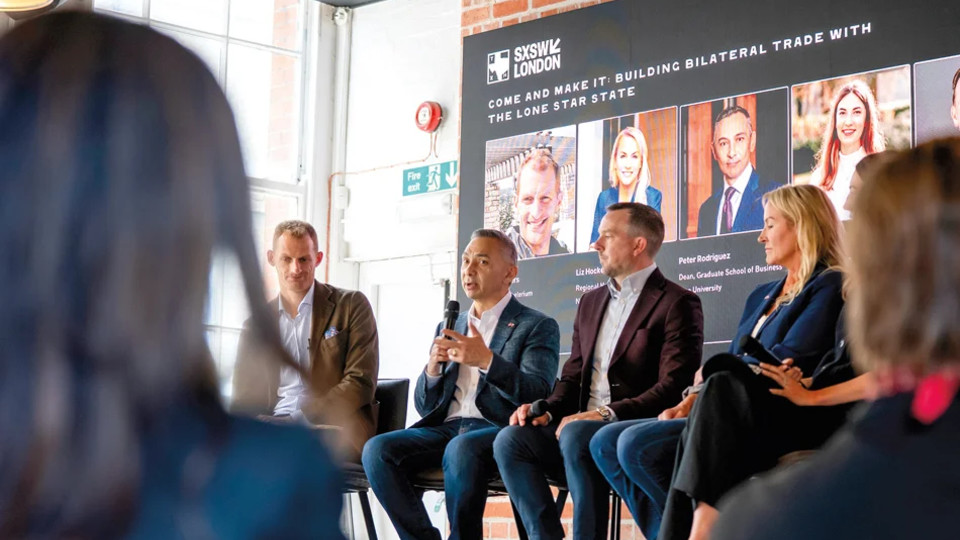
The Sweet Taste of Success
Opeyemi “Ope” Amosu ’14 grew ChòpnBlọk from pop-ups to a nationally acclaimed Houston restaurant, merging West African cuisine with business expertise and earning James Beard Award recognition.
